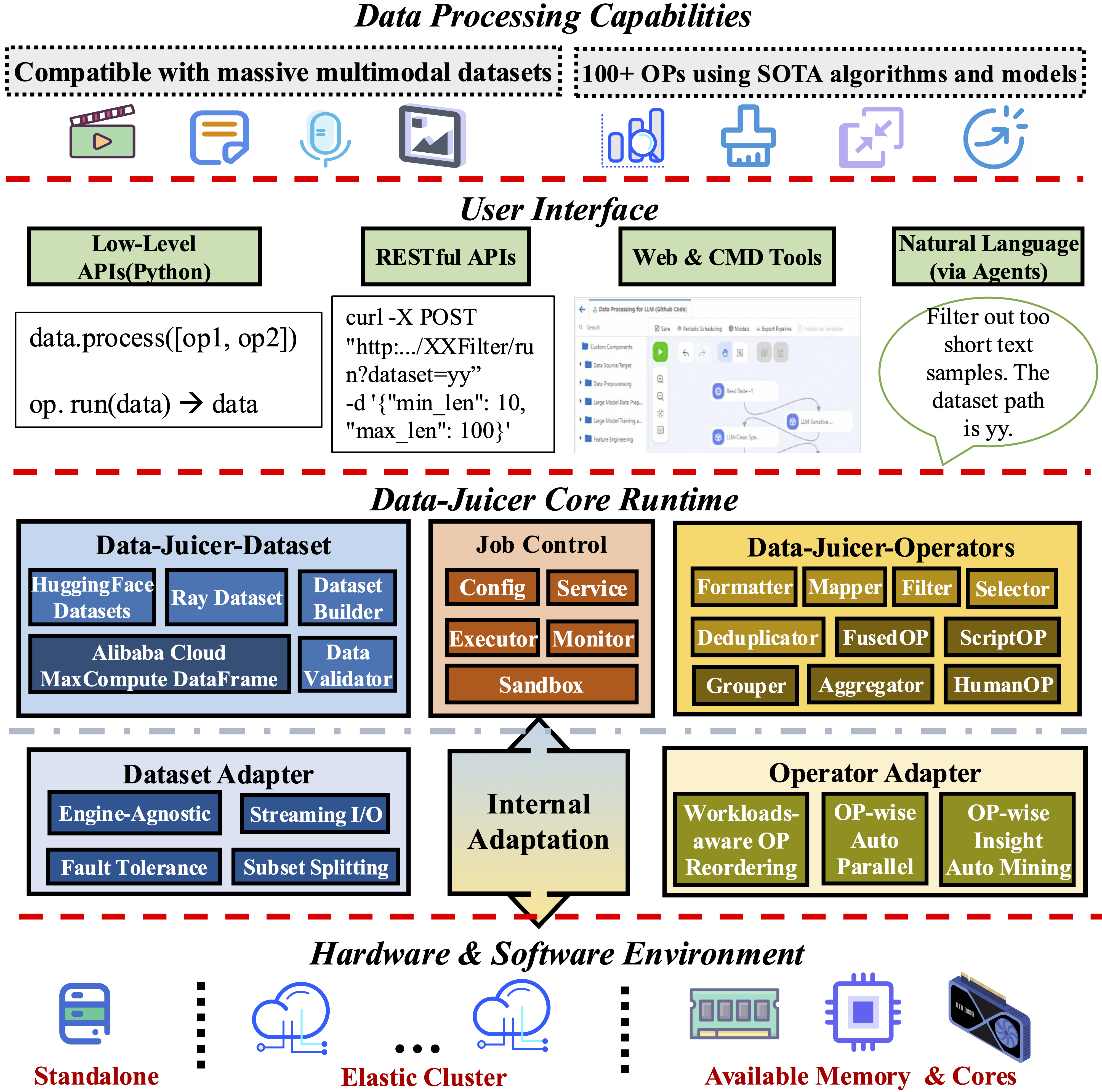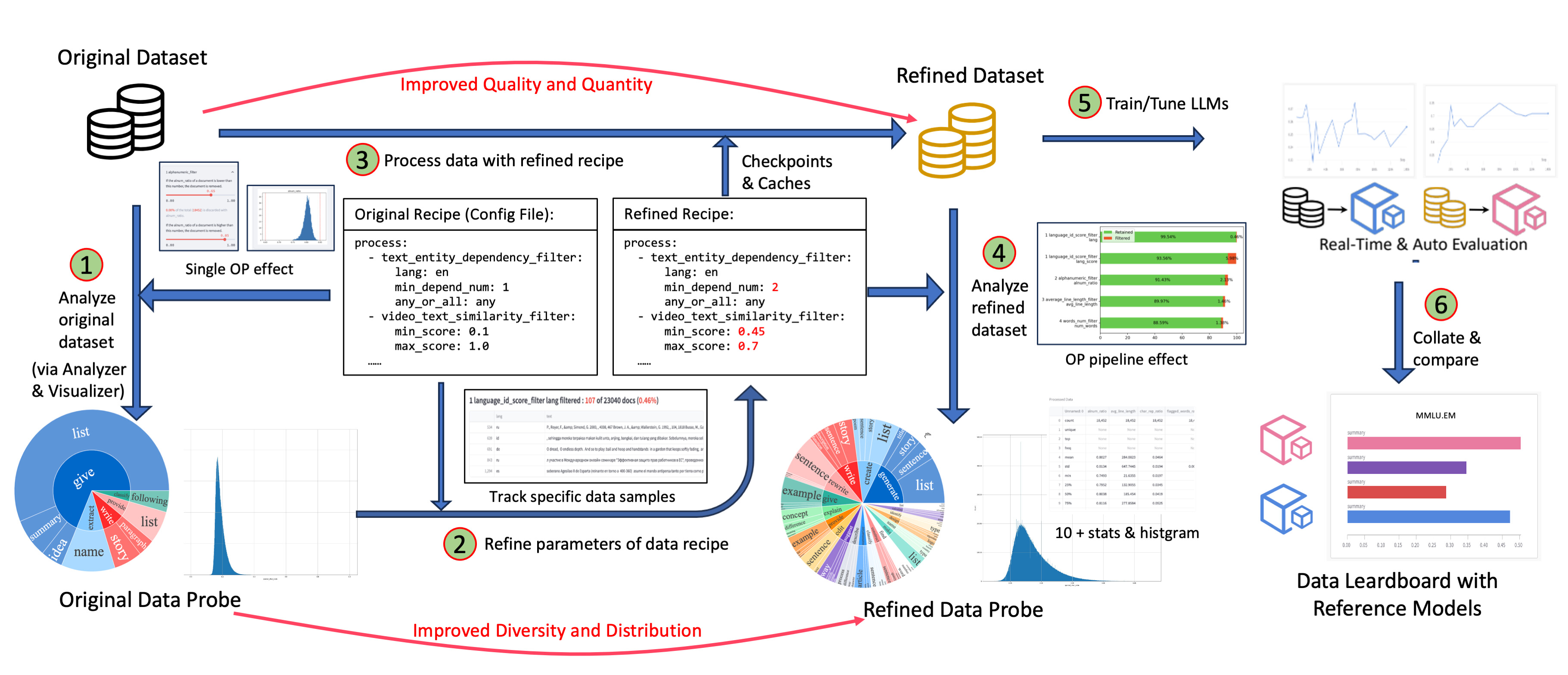
data-juicer
Data processing for and with foundation models! 🍎 🍋 🌽 ➡️ ➡️🍸 🍹 🍷
Stars: 5209
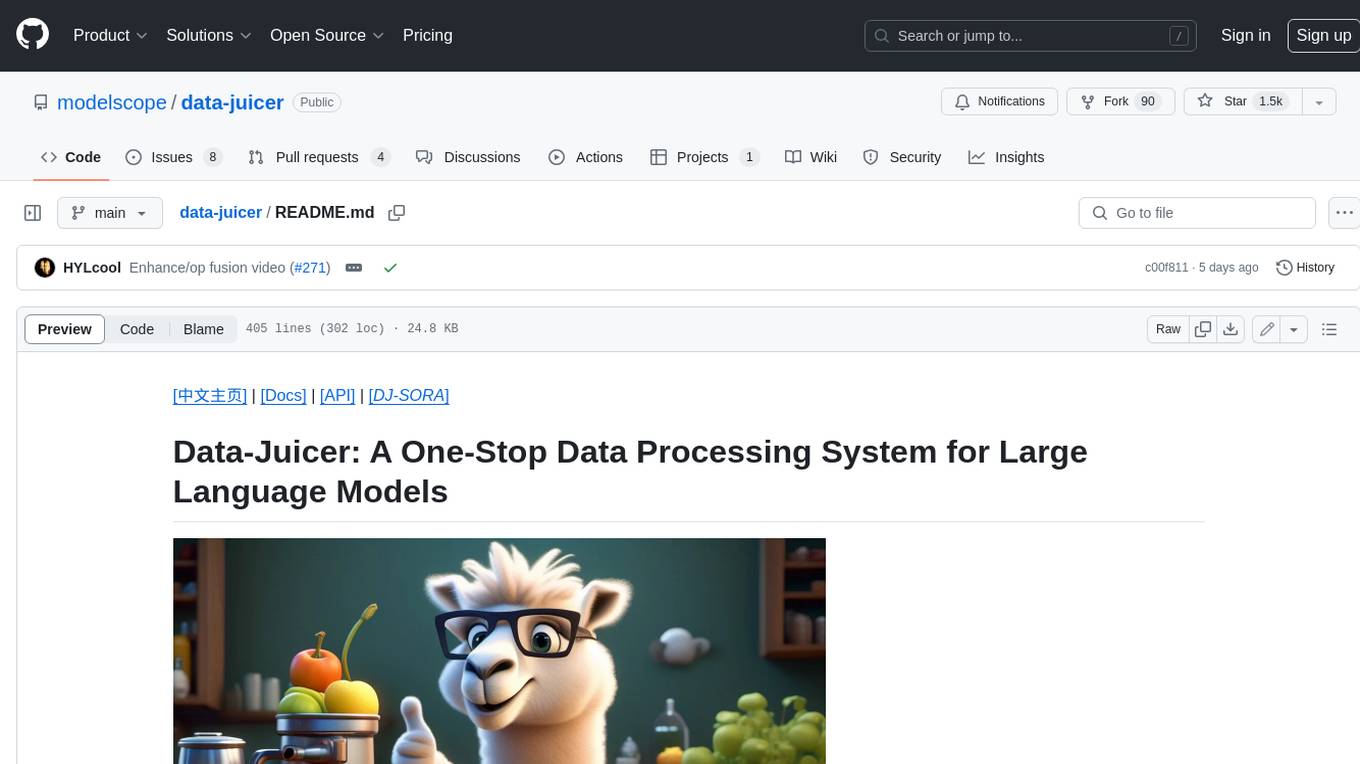
Data-Juicer is a one-stop data processing system to make data higher-quality, juicier, and more digestible for LLMs. It is a systematic & reusable library of 80+ core OPs, 20+ reusable config recipes, and 20+ feature-rich dedicated toolkits, designed to function independently of specific LLM datasets and processing pipelines. Data-Juicer allows detailed data analyses with an automated report generation feature for a deeper understanding of your dataset. Coupled with multi-dimension automatic evaluation capabilities, it supports a timely feedback loop at multiple stages in the LLM development process. Data-Juicer offers tens of pre-built data processing recipes for pre-training, fine-tuning, en, zh, and more scenarios. It provides a speedy data processing pipeline requiring less memory and CPU usage, optimized for maximum productivity. Data-Juicer is flexible & extensible, accommodating most types of data formats and allowing flexible combinations of OPs. It is designed for simplicity, with comprehensive documentation, easy start guides and demo configs, and intuitive configuration with simple adding/removing OPs from existing configs.
README:
[中文主页] | [DJ-Cookbook] | [OperatorZoo] | [API] | [Awesome LLM Data]
Data-Juicer is a one-stop system to process text and multimodal data for and with foundation models (typically LLMs). We provide a playground with a managed JupyterLab. Try Data-Juicer straight away in your browser! If you find Data-Juicer useful for your research or development, please kindly support us by starting it (then be instantly notified of our new releases) and citing our works.
Platform for AI of Alibaba Cloud (PAI) has deeply integrated Data-Juicer into its data processing products. PAI is an AI Native large model and AIGC engineering platform that provides dataset management, computing power management, model tool chain, model development, model training, model deployment, and AI asset management. For documentation on data processing, please refer to: PAI-Data Processing for Large Models.
Data-Juicer is being actively updated and maintained. We will periodically enhance and add more features, data recipes and datasets. We welcome you to join us, in promoting data-model co-development along with research and applications of foundation models!
[Demo Video] DataJuicer-Agent: Quick start your data processing journey!
https://github.com/user-attachments/assets/6eb726b7-6054-4b0c-905e-506b2b9c7927
[Demo Video] DataJuicer-Sandbox: Better data-model co-dev at a lower cost!
https://github.com/user-attachments/assets/a45f0eee-0f0e-4ffe-9a42-d9a55370089d
- 🎉 [2025-09-19] Our work of Data-Juicer 2.0: Cloud-Scale Adaptive Data Processing for and with Foundation Models has been accepted as a NeurIPS'25 Spotlight (top 3.1% of all submissions)!
- 🎉 [2025-09-19] Our two works regarding data mixture/selection/synthesis: Diversity as a Reward: Fine-Tuning LLMs on a Mixture of Domain-Undetermined Data and MindGYM: What Matters in Question Synthesis for Thinking-Centric Fine-Tuning? have been accepted by NeurIPS'25!
- 🛠️ [2025-06-04] How to process feedback data in the "era of experience"? We propose Trinity-RFT: A General-Purpose and Unified Framework for Reinforcement Fine-Tuning of LLMs, which leverages Data-Juicer for its data pipelines tailored for RFT scenarios.
- 🎉 [2025-06-04] Our Data-Model Co-development Survey has been accepted by IEEE Transactions on Pattern Analysis and Machine Intelligence (TPAMI)! Welcome to explore and contribute the awesome-list.
- 🔎 [2025-06-04] We introduce DetailMaster: Can Your Text-to-Image Model Handle Long Prompts? A synthetic benchmark revealing notable performance drops despite large models' proficiency with short descriptions.
- 🎉 [2025-05-06] Our work of Data-Juicer Sandbox has been accepted as a ICML'25 Spotlight (top 2.6% of all submissions)!
- 💡 [2025-03-13] We propose MindGYM: What Matters in Question Synthesis for Thinking-Centric Fine-Tuning? A new data synthesis method that enables large models to self-synthesize high-quality, low-variance data for efficient fine-tuning, (e.g., 16% gain on MathVision using only 400 samples).
- 🤝 [2025-02-28] DJ has been integrated in Ray's official Ecosystem and Example Gallery. Besides, our patch in DJ2.0 for the streaming JSON reader has been officially integrated by Apache Arrow.
- 🎉 [2025-02-27] Our work on contrastive data synthesis, ImgDiff, has been accepted by CVPR'25!
- 💡 [2025-02-05] We propose a new data selection method, Diversity as a Reward: Fine-Tuning LLMs on a Mixture of Domain-Undetermined Data. It is theoretically informed, via treating diversity as a reward, achieves better overall performance across 7 benchmarks when post-training SOTA LLMs.
- 🎉 [2025-01-11] We release our 2.0 paper, Data-Juicer 2.0: Cloud-Scale Adaptive Data Processing for and with Foundation Models. It now can process 70B data samples within 2.1h, using 6400 CPU cores on 50 Ray nodes from Alibaba Cloud cluster, and deduplicate 5TB data within 2.8h using 1280 CPU cores on 8 Ray nodes.
History News:
>- [2025-01-03] We support post-tuning scenarios better, via 20+ related new OPs, and via unified dataset format compatible to LLaMA-Factory and ModelScope-Swift.
- [2024-12-17] We propose HumanVBench, which comprises 16 human-centric tasks with synthetic data, benchmarking 22 video-MLLMs' capabilities from views of inner emotion and outer manifestations. See more details in our paper, and try to evaluate your models with it.
- [2024-11-22] We release DJ v1.0.0, in which we refactored Data-Juicer's Operator, Dataset, Sandbox and many other modules for better usability, such as supporting fault-tolerant, FastAPI and adaptive resource management.
- [2024-08-25] We give a tutorial about data processing for multimodal LLMs in KDD'2024.
- [2024-08-09] We propose Img-Diff, which enhances the performance of multimodal large language models through contrastive data synthesis, achieving a score that is 12 points higher than GPT-4V on the MMVP benchmark. See more details in our paper, and download the dataset from huggingface and modelscope.
- [2024-07-24] "Tianchi Better Synth Data Synthesis Competition for Multimodal Large Models" — Our 4th data-centric LLM competition has kicked off! Please visit the competition's official website for more information.
- [2024-07-17] We utilized the Data-Juicer Sandbox Laboratory Suite to systematically optimize data and models through a co-development workflow between data and models, achieving a new top spot on the VBench text-to-video leaderboard. The related achievements have been compiled and published in a paper, and the model has been released on the ModelScope and HuggingFace platforms.
- [2024-07-12] Our awesome list of MLLM-Data has evolved into a systemic survey from model-data co-development perspective. Welcome to explore and contribute!
- [2024-06-01] ModelScope-Sora "Data Directors" creative sprint—Our third data-centric LLM competition has kicked off! Please visit the competition's official website for more information.
- [2024-03-07] We release Data-Juicer v0.2.0 now! In this new version, we support more features for multimodal data (including video now), and introduce DJ-SORA to provide open large-scale, high-quality datasets for SORA-like models.
- [2024-02-20] We have actively maintained an awesome list of LLM-Data, welcome to visit and contribute!
- [2024-02-05] Our paper has been accepted by SIGMOD'24 industrial track!
- [2024-01-10] Discover new horizons in "Data Mixture"—Our second data-centric LLM competition has kicked off! Please visit the competition's official website for more information.
- [2024-01-05] We release Data-Juicer v0.1.3 now! In this new version, we support more Python versions (3.8-3.10), and support multimodal dataset converting/processing (Including texts, images, and audios. More modalities will be supported in the future). Besides, our paper is also updated to v3.
- [2023-10-13] Our first data-centric LLM competition begins! Please visit the competition's official websites, FT-Data Ranker (1B Track, 7B Track), for more information.
-
Systematic & Reusable: Empowering users with a systematic library of 100+ core OPs, and 50+ reusable config recipes and dedicated toolkits, designed to function independently of specific multimodal LLM datasets and processing pipelines. Supporting data analysis, cleaning, and synthesis in pre-training, post-tuning, en, zh, and more scenarios.
-
User-Friendly & Extensible: Designed for simplicity and flexibility, with easy-start guides, and DJ-Cookbook containing fruitful demo usages. Feel free to implement your own OPs for customizable data processing.
Data-Juicer now uses AI to automatically rewrite and optimize operator docstrings, generating detailed operator documentation to help users quickly understand the functionality and usage of each operator.
For details about the implementation of this documentation enhancement workflow, please visit the demos/op_doc_enhance_workflow folder under thedj_agentsbranch. -
Efficient & Robust: Providing performance-optimized parallel data processing (Aliyun-PAI\Ray\CUDA\OP Fusion), faster with less resource usage, verified in large-scale production environments.
-
Effect-Proven & Sandbox: Supporting data-model co-development, enabling rapid iteration through the sandbox laboratory, and providing features such as feedback loops and visualization, so that you can better understand and improve your data and models. Many effect-proven datasets and models have been derived from DJ, in scenarios such as pre-training, text-to-video and image-to-text generation.
- Tutorial
- Useful documents
- Demos
- Tools
- Third-party
Data-Juicer is released under Apache License 2.0.
Data-Juicer has benefited greatly from and continues to welcome contributions at all levels: new operators (from simple functions to advanced algorithms based on existing papers), data-recipes & processing scenarios, feature requests, efficiency enhancements, bug fixes, better documentation and usage feedback. Please refer to our Developer Guide to get started. Spreading the word in the community and giving the repository a star ⭐ are also invaluable forms of support!
Our sincere gratitude goes to all our code contributors who are the cornerstone of this project. We strive to keep the list below updated and look forward to including more names (alphabetical order); please reach out if we have missed any acknowledgements.
- Initiated by: Alibaba Tongyi Lab
- Co-developed and Optimized with: Alibaba Cloud PAI, Anyscale (Ray Team), Sun Yat-sen University (Knowledge Engineering Lab), NVIDIA (NeMo Team), ...
- Used by & Valuable Feedback from: AgentScope, Alibaba Group, Ant Group, BYD Auto, Bytedance, CAS, DiffSynth-Studio, EasyAnimate, Eval-Scope, JD.com, LLaMA-Factory, Nanjing University, OPPO, Peking University, RM-Gallery, RUC, Tsinghua University, Trinity-RFT, UCAS, Xiaohongshu, Xiaomi, Ximalaya, Zhejiang University, ...
- Inspired by: Data-Juicer also thanks pioneering open-source projects such as Apache Arrow, BLOOM, RedPajama-Data, Ray, Hugging Face Datasets, ...
We look forward to your feedback and collaboration, including partnership inquiries or proposals for new sub-projects related to Data-Juicer. Feel free to contact via issues, PRs, Slack channel, DingDing group, and e-mails.
If you find Data-Juicer useful for your research or development, please kindly cite the following works, 1.0paper, 2.0paper.
@inproceedings{djv1,
title={Data-Juicer: A One-Stop Data Processing System for Large Language Models},
author={Daoyuan Chen and Yilun Huang and Zhijian Ma and Hesen Chen and Xuchen Pan and Ce Ge and Dawei Gao and Yuexiang Xie and Zhaoyang Liu and Jinyang Gao and Yaliang Li and Bolin Ding and Jingren Zhou},
booktitle={International Conference on Management of Data},
year={2024}
}
@article{djv2,
title={Data-Juicer 2.0: Cloud-Scale Adaptive Data Processing for and with Foundation Models},
author={Chen, Daoyuan and Huang, Yilun and Pan, Xuchen and Jiang, Nana and Wang, Haibin and Zhang, Yilei and Ge, Ce and Chen, Yushuo and Zhang, Wenhao and Ma, Zhijian and Huang, Jun and Lin, Wei and Li, Yaliang and Ding, Bolin and Zhou, Jingren},
journal={Advances in Neural Information Processing Systems},
year={2025}
}
More data-related papers from the Data-Juicer Team:
>-
(ICML'25 Spotlight) Data-Juicer Sandbox: A Feedback-Driven Suite for Multimodal Data-Model Co-development
-
(CVPR'25) ImgDiff: Contrastive Data Synthesis for Vision Large Language Models
-
(NeurIPS'25) Diversity as a Reward: Fine-Tuning LLMs on a Mixture of Domain-Undetermined Data
-
(NeurIPS'25) MindGYM: What Matters in Question Synthesis for Thinking-Centric Fine-Tuning?
-
(Benchmark Data) HumanVBench: Exploring Human-Centric Video Understanding Capabilities of MLLMs with Synthetic Benchmark Data
-
(Benchmark Data) DetailMaster: Can Your Text-to-Image Model Handle Long Prompts?
-
(Data Scaling) BiMix: A Bivariate Data Mixing Law for Language Model Pretraining
For Tasks:
Click tags to check more tools for each tasksFor Jobs:
Alternative AI tools for data-juicer
Similar Open Source Tools

data-juicer
Data-Juicer is a one-stop data processing system to make data higher-quality, juicier, and more digestible for LLMs. It is a systematic & reusable library of 80+ core OPs, 20+ reusable config recipes, and 20+ feature-rich dedicated toolkits, designed to function independently of specific LLM datasets and processing pipelines. Data-Juicer allows detailed data analyses with an automated report generation feature for a deeper understanding of your dataset. Coupled with multi-dimension automatic evaluation capabilities, it supports a timely feedback loop at multiple stages in the LLM development process. Data-Juicer offers tens of pre-built data processing recipes for pre-training, fine-tuning, en, zh, and more scenarios. It provides a speedy data processing pipeline requiring less memory and CPU usage, optimized for maximum productivity. Data-Juicer is flexible & extensible, accommodating most types of data formats and allowing flexible combinations of OPs. It is designed for simplicity, with comprehensive documentation, easy start guides and demo configs, and intuitive configuration with simple adding/removing OPs from existing configs.
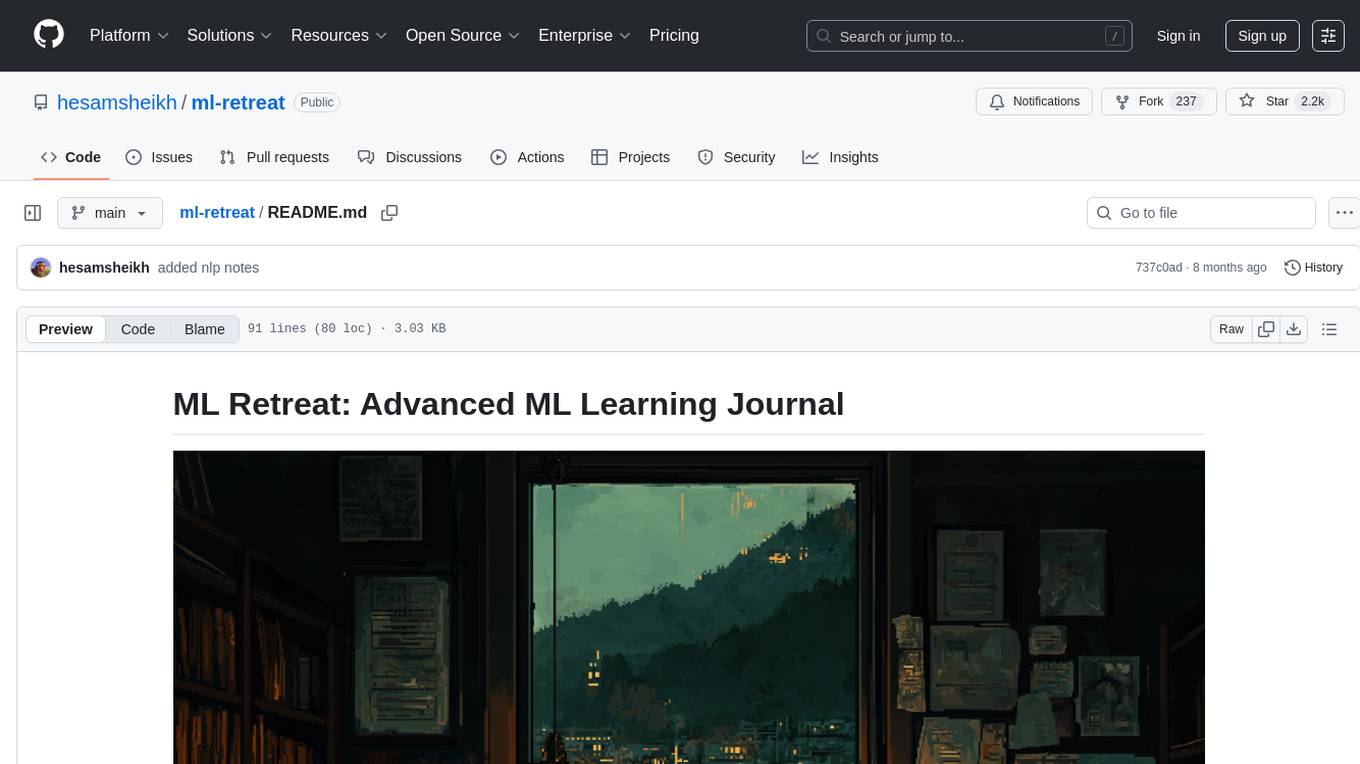
ml-retreat
ML-Retreat is a comprehensive machine learning library designed to simplify and streamline the process of building and deploying machine learning models. It provides a wide range of tools and utilities for data preprocessing, model training, evaluation, and deployment. With ML-Retreat, users can easily experiment with different algorithms, hyperparameters, and feature engineering techniques to optimize their models. The library is built with a focus on scalability, performance, and ease of use, making it suitable for both beginners and experienced machine learning practitioners.
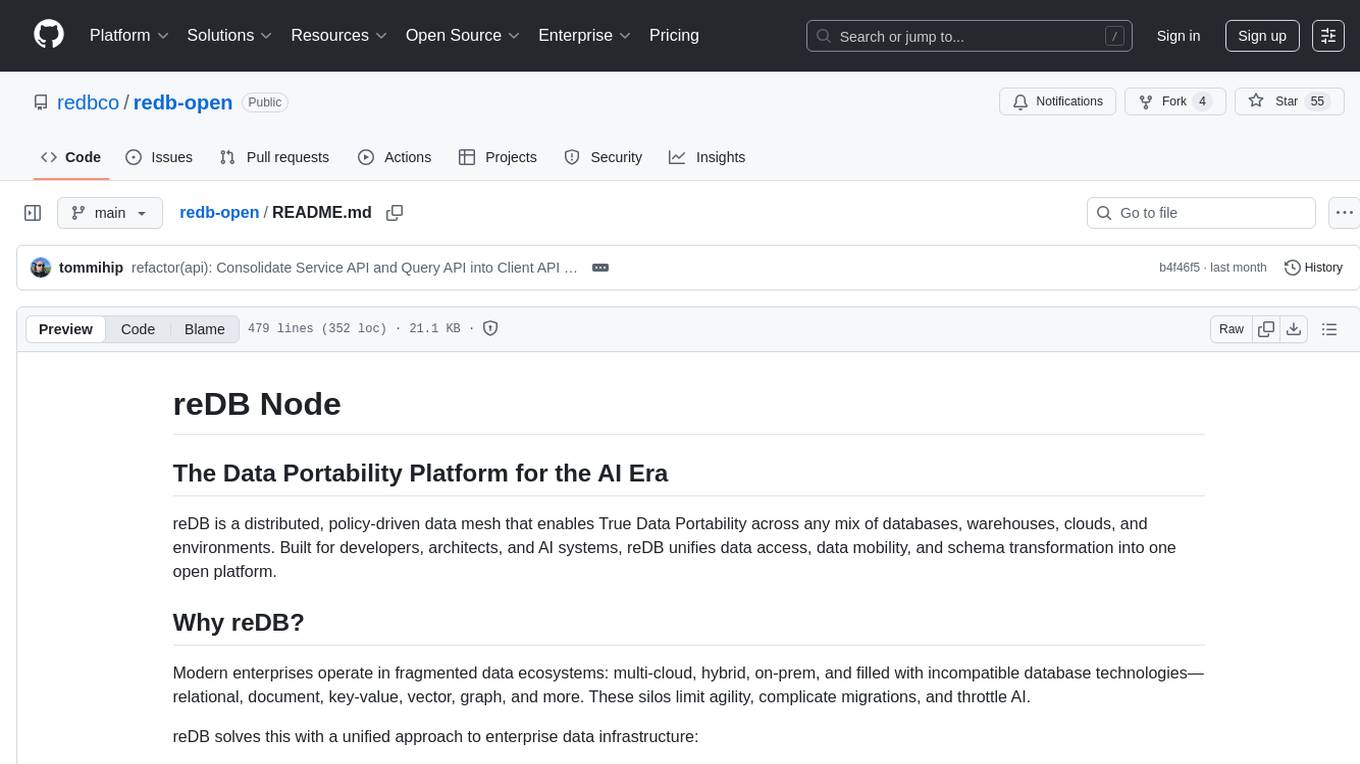
redb-open
reDB Node is a distributed, policy-driven data mesh platform that enables True Data Portability across various databases, warehouses, clouds, and environments. It unifies data access, data mobility, and schema transformation into one open platform. Built for developers, architects, and AI systems, reDB addresses the challenges of fragmented data ecosystems in modern enterprises by providing multi-database interoperability, automated schema versioning, zero-downtime migration, real-time developer data environments with obfuscation, quantum-resistant encryption, and policy-based access control. The project aims to build a foundation for future-proof data infrastructure.
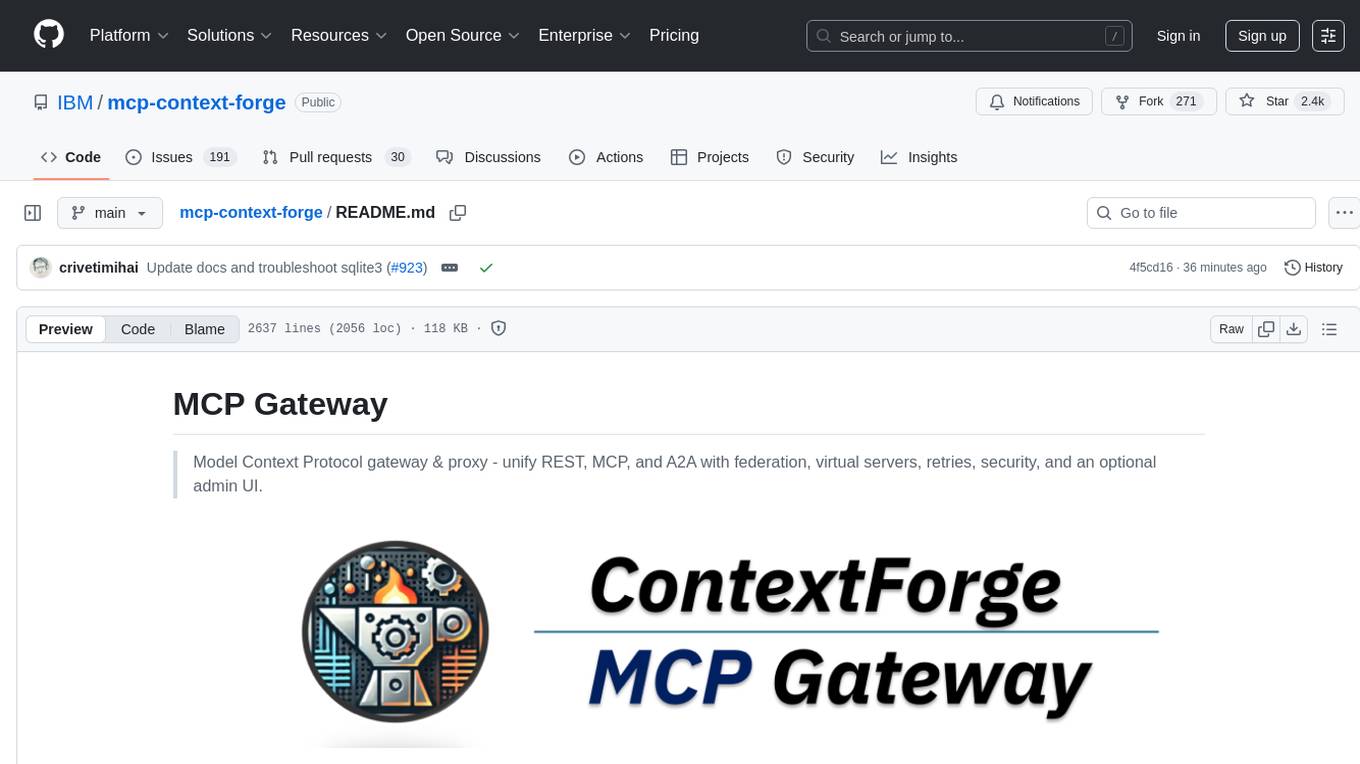
mcp-context-forge
MCP Context Forge is a powerful tool for generating context-aware data for machine learning models. It provides functionalities to create diverse datasets with contextual information, enhancing the performance of AI algorithms. The tool supports various data formats and allows users to customize the context generation process easily. With MCP Context Forge, users can efficiently prepare training data for tasks requiring contextual understanding, such as sentiment analysis, recommendation systems, and natural language processing.
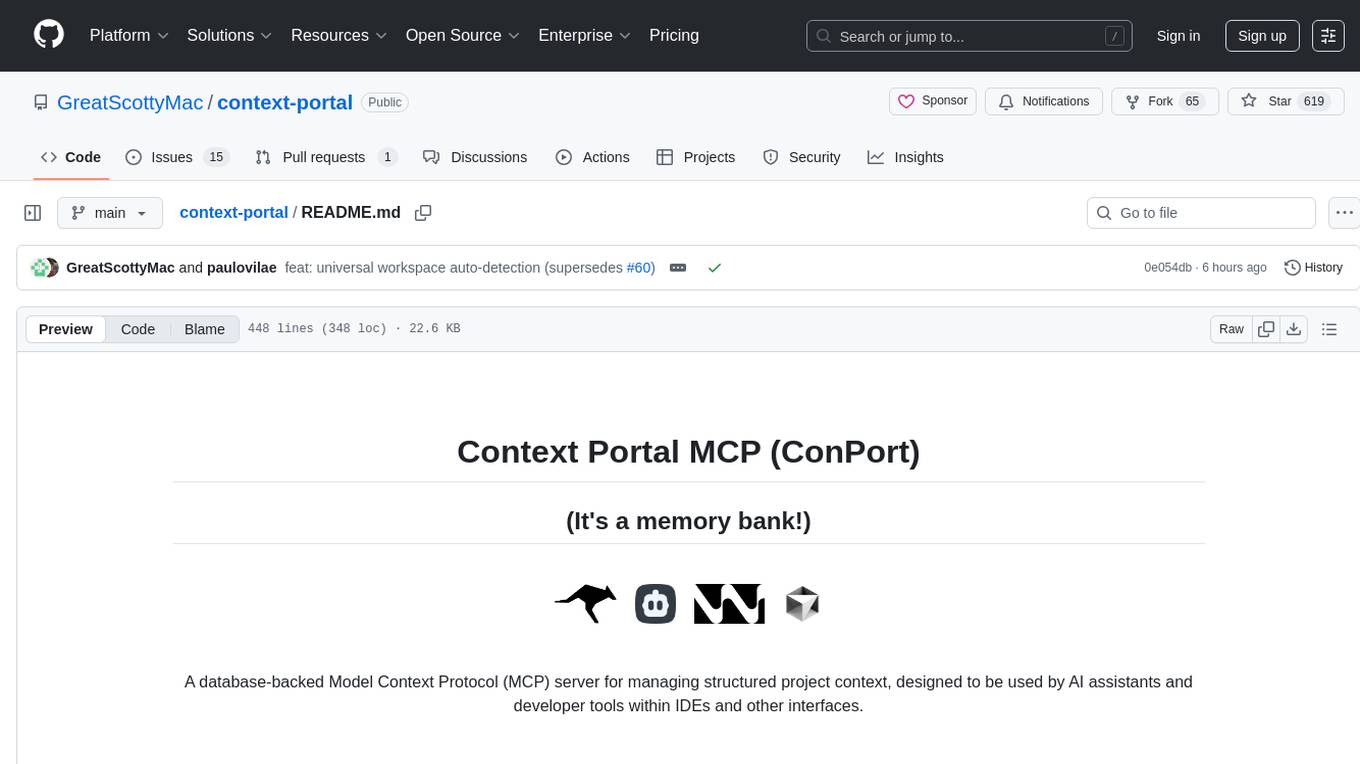
context-portal
Context-portal is a versatile tool for managing and visualizing data in a collaborative environment. It provides a user-friendly interface for organizing and sharing information, making it easy for teams to work together on projects. With features such as customizable dashboards, real-time updates, and seamless integration with popular data sources, Context-portal streamlines the data management process and enhances productivity. Whether you are a data analyst, project manager, or team leader, Context-portal offers a comprehensive solution for optimizing workflows and driving better decision-making.
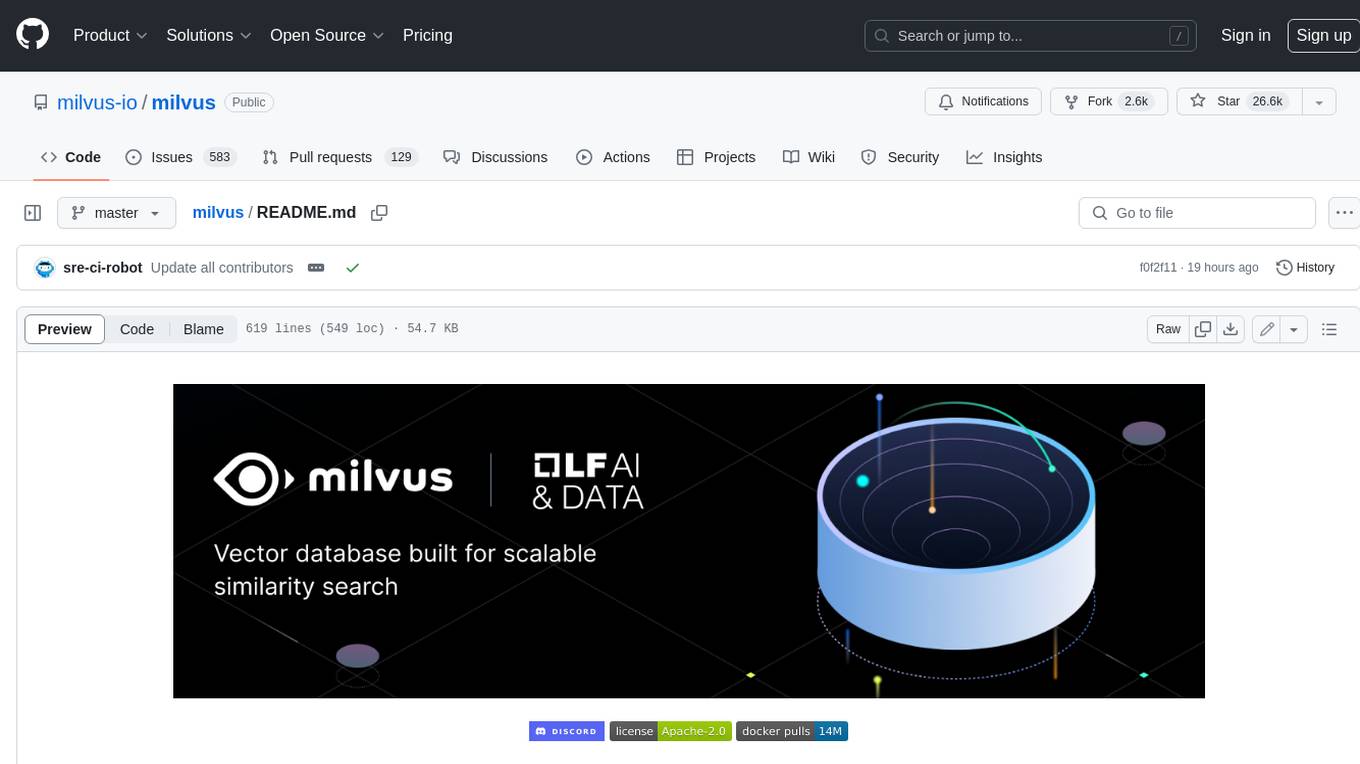
milvus
Milvus is an open-source vector database built to power embedding similarity search and AI applications. Milvus makes unstructured data search more accessible, and provides a consistent user experience regardless of the deployment environment. Milvus 2.0 is a cloud-native vector database with storage and computation separated by design. All components in this refactored version of Milvus are stateless to enhance elasticity and flexibility. For more architecture details, see Milvus Architecture Overview. Milvus was released under the open-source Apache License 2.0 in October 2019. It is currently a graduate project under LF AI & Data Foundation.
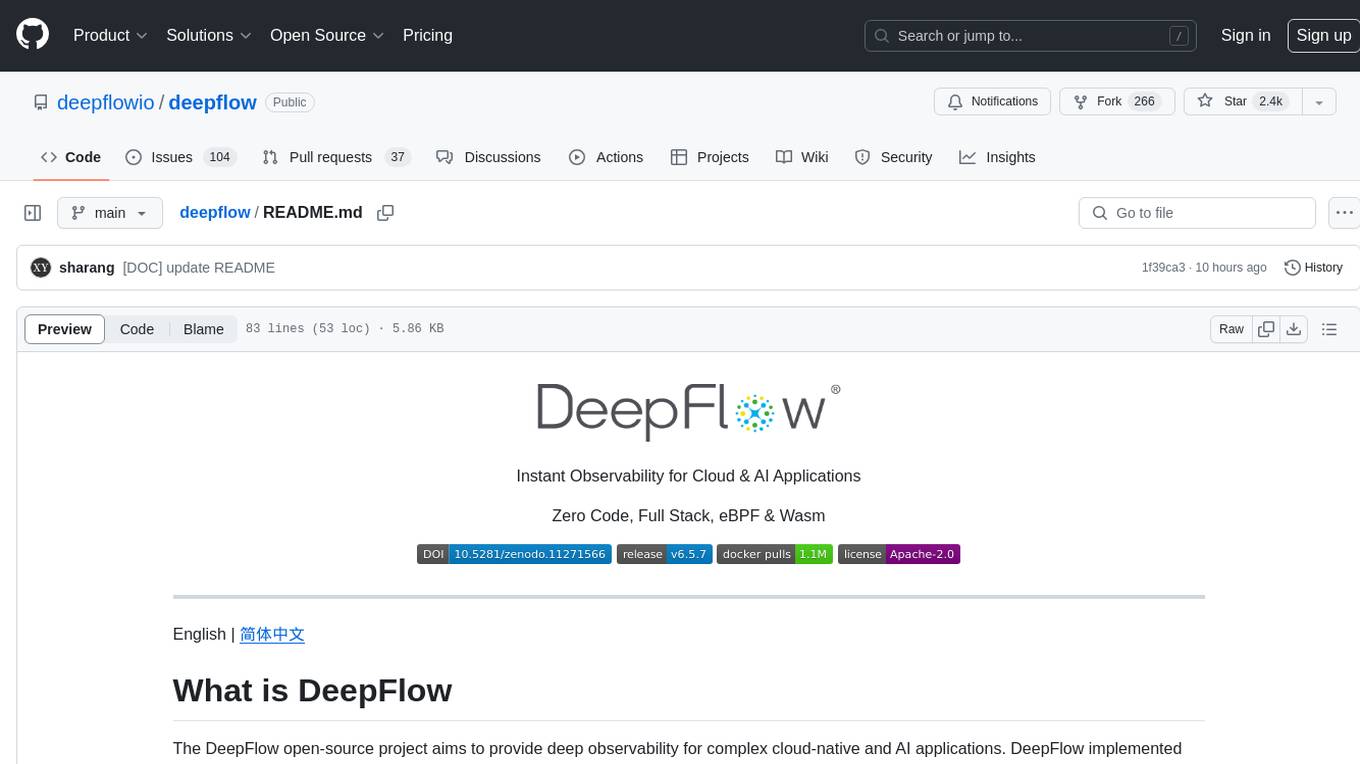
deepflow
DeepFlow is an open-source project that provides deep observability for complex cloud-native and AI applications. It offers Zero Code data collection with eBPF for metrics, distributed tracing, request logs, and function profiling. DeepFlow is integrated with SmartEncoding to achieve Full Stack correlation and efficient access to all observability data. With DeepFlow, cloud-native and AI applications automatically gain deep observability, removing the burden of developers continually instrumenting code and providing monitoring and diagnostic capabilities covering everything from code to infrastructure for DevOps/SRE teams.
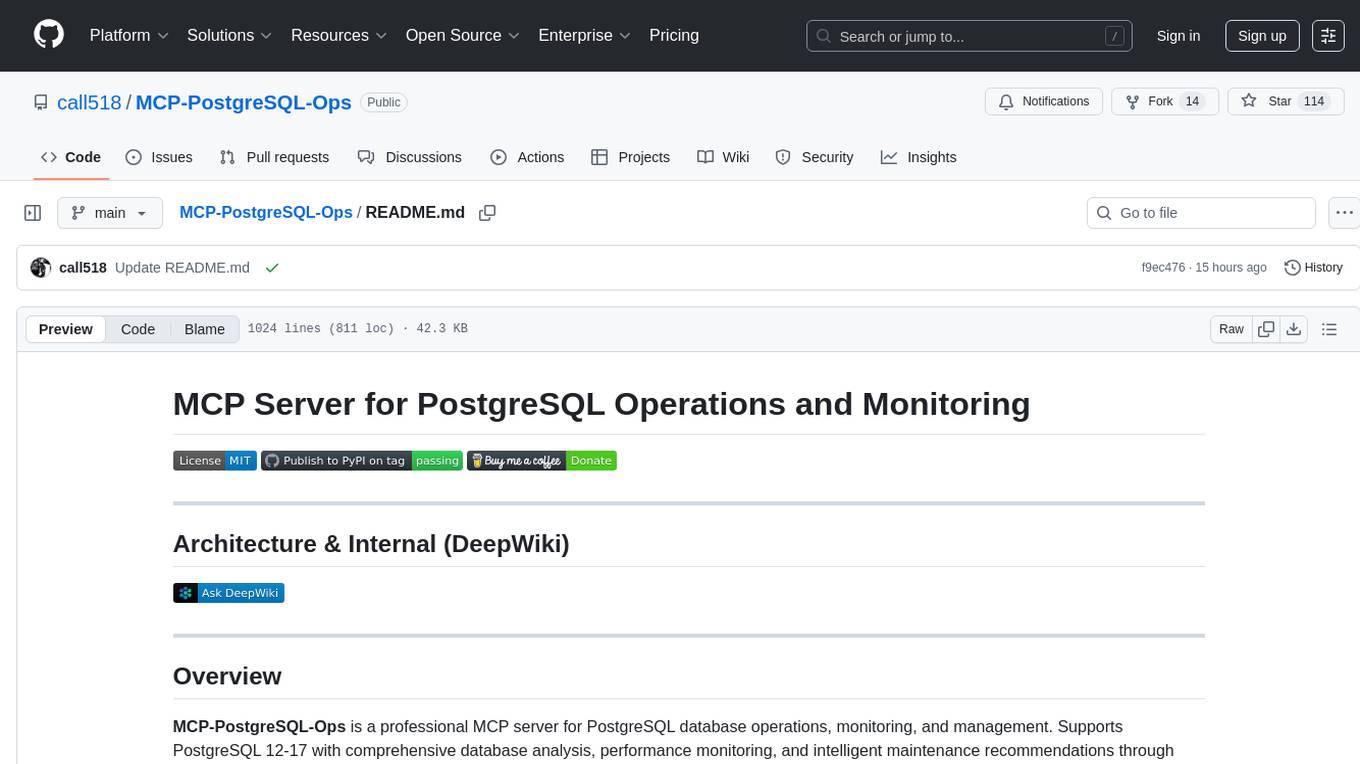
MCP-PostgreSQL-Ops
MCP-PostgreSQL-Ops is a repository containing scripts and tools for managing and optimizing PostgreSQL databases. It provides a set of utilities to automate common database administration tasks, such as backup and restore, performance tuning, and monitoring. The scripts are designed to simplify the operational aspects of running PostgreSQL databases, making it easier for administrators to maintain and optimize their database instances. With MCP-PostgreSQL-Ops, users can streamline their database management processes and improve the overall performance and reliability of their PostgreSQL deployments.
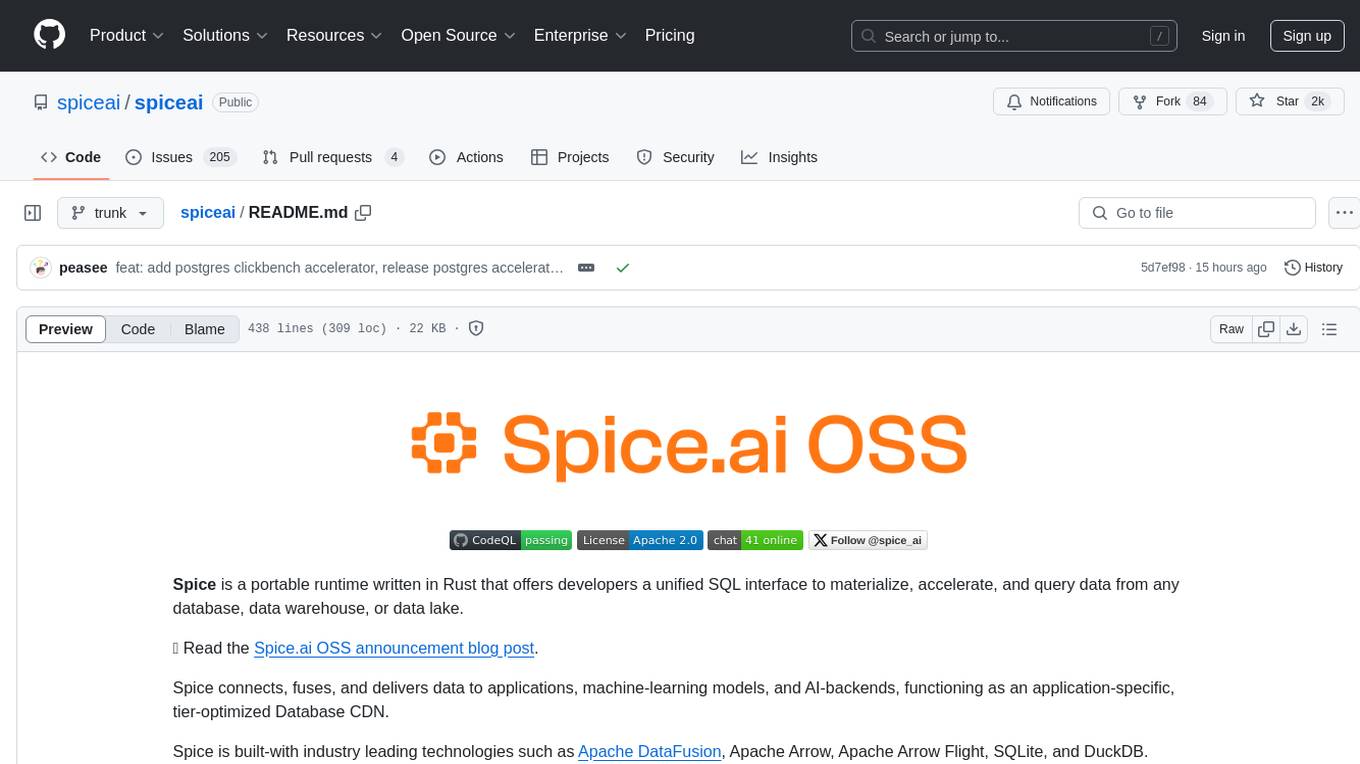
spiceai
Spice is a portable runtime written in Rust that offers developers a unified SQL interface to materialize, accelerate, and query data from any database, data warehouse, or data lake. It connects, fuses, and delivers data to applications, machine-learning models, and AI-backends, functioning as an application-specific, tier-optimized Database CDN. Built with industry-leading technologies such as Apache DataFusion, Apache Arrow, Apache Arrow Flight, SQLite, and DuckDB. Spice makes it fast and easy to query data from one or more sources using SQL, co-locating a managed dataset with applications or machine learning models, and accelerating it with Arrow in-memory, SQLite/DuckDB, or attached PostgreSQL for fast, high-concurrency, low-latency queries.
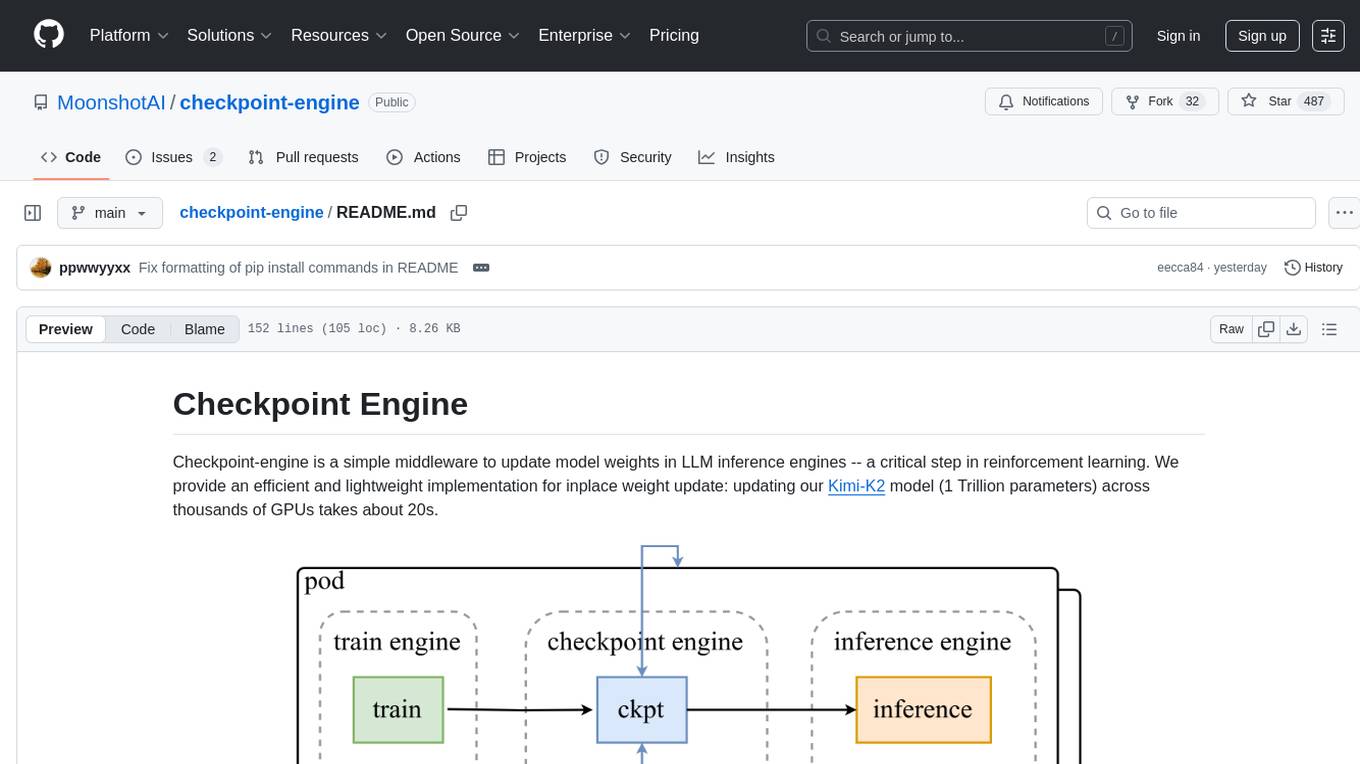
checkpoint-engine
Checkpoint-engine is a middleware tool designed for updating model weights in LLM inference engines efficiently. It provides implementations for both Broadcast and P2P weight update methods, orchestrating the transfer process and controlling the inference engine through ZeroMQ socket. The tool optimizes weight broadcast by arranging data transfer into stages and organizing transfers into a pipeline for performance. It supports flexible installation options and is tested with various models and device setups. Checkpoint-engine also allows reusing weights from existing instances and provides a patch for FP8 quantization in vLLM.
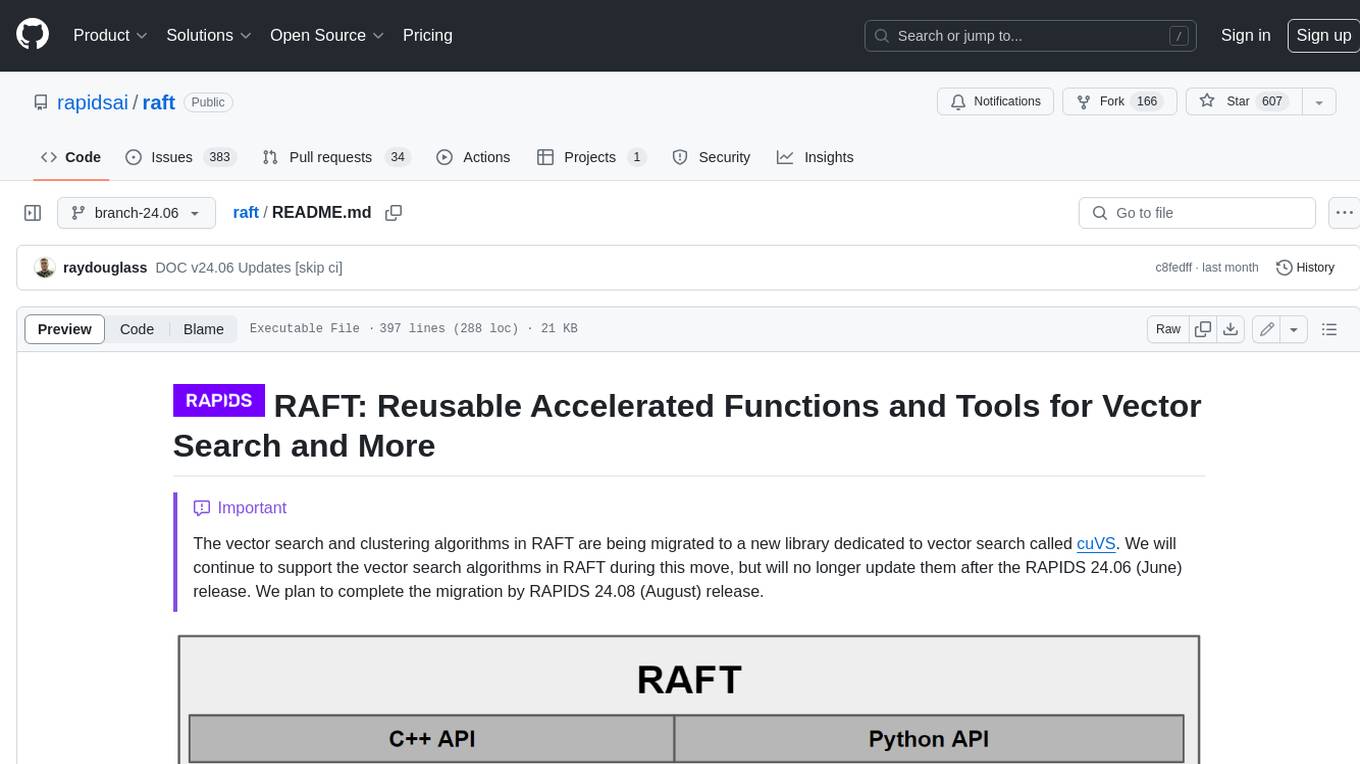
raft
RAFT (Reusable Accelerated Functions and Tools) is a C++ header-only template library with an optional shared library that contains fundamental widely-used algorithms and primitives for machine learning and information retrieval. The algorithms are CUDA-accelerated and form building blocks for more easily writing high performance applications.
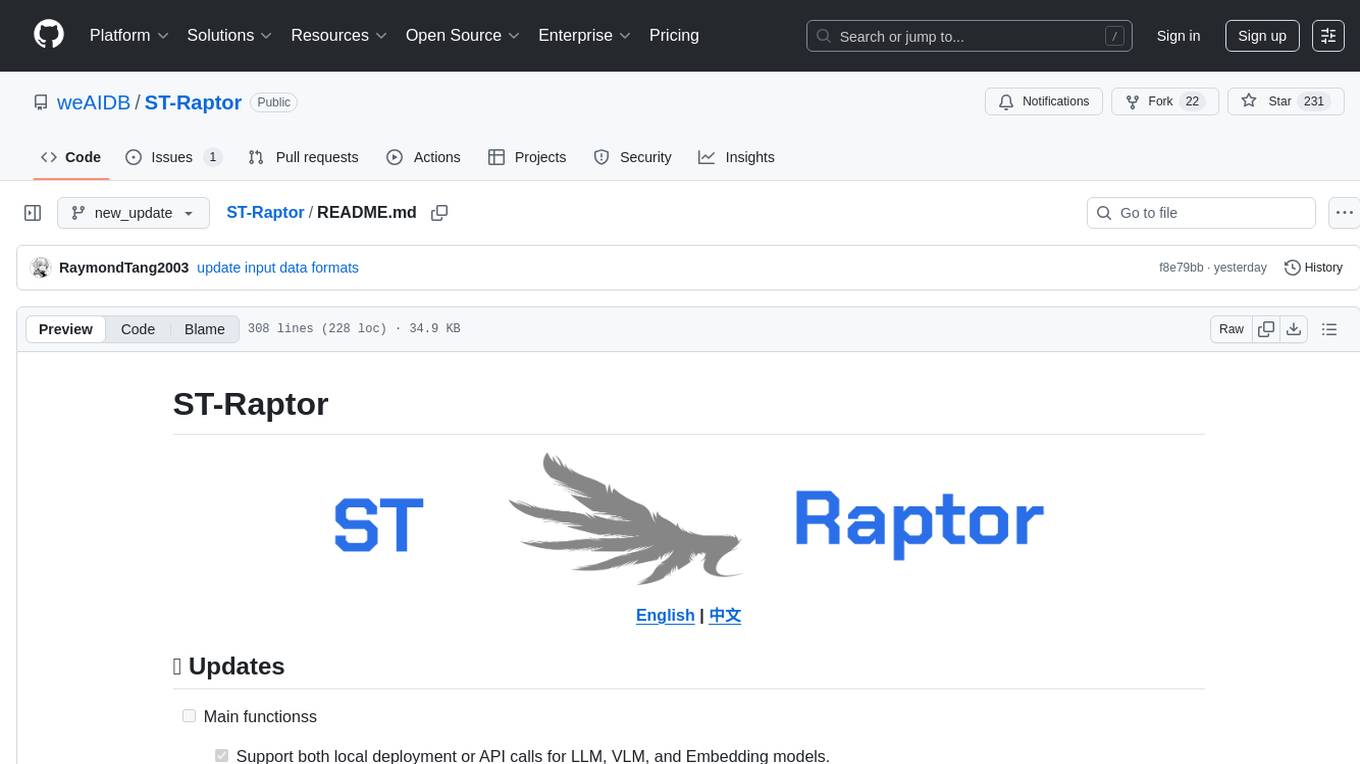
ST-Raptor
ST-Raptor is a powerful open-source tool for analyzing and visualizing spatial-temporal data. It provides a user-friendly interface for exploring complex datasets and generating insightful visualizations. With ST-Raptor, users can easily identify patterns, trends, and anomalies in their spatial-temporal data, making it ideal for researchers, analysts, and data scientists working with geospatial and time-series data.
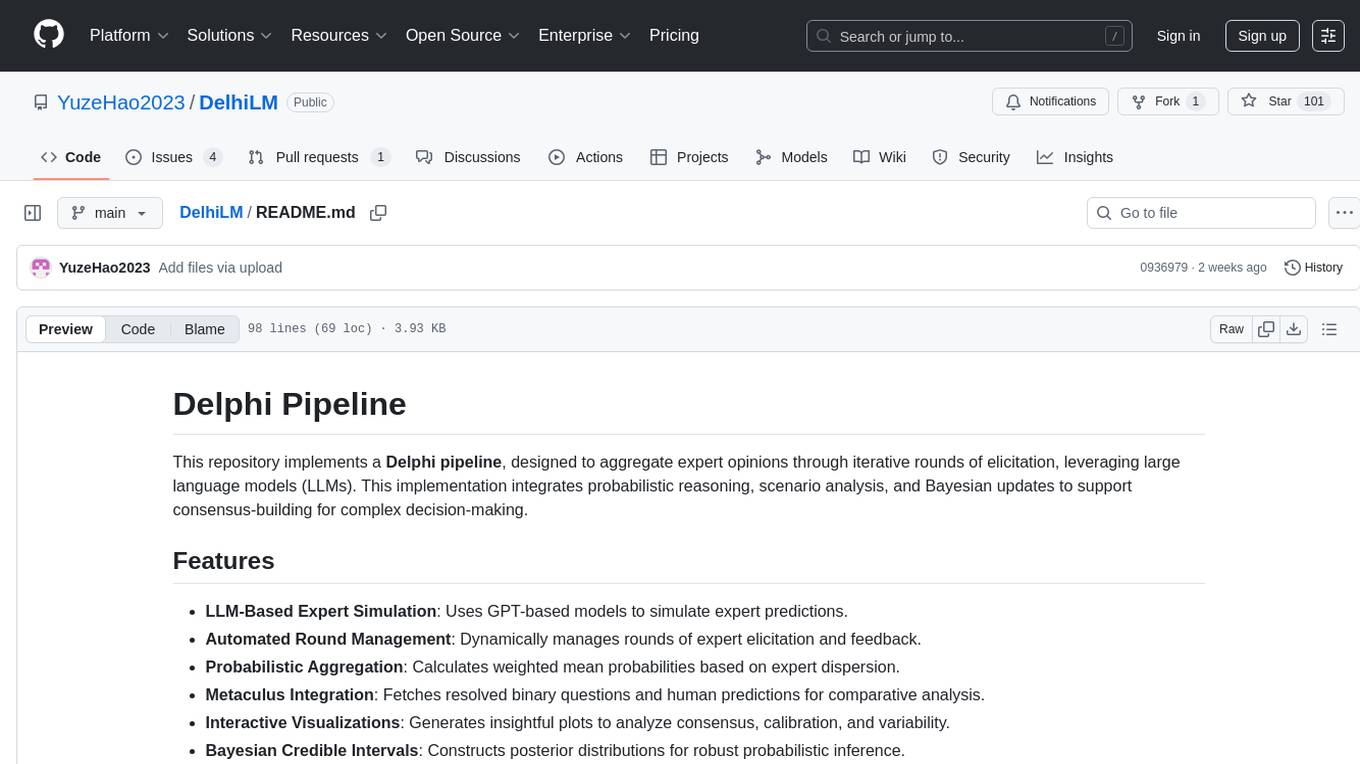
DelhiLM
DelhiLM is a natural language processing tool for building and training language models. It provides a user-friendly interface for text processing tasks such as tokenization, lemmatization, and language model training. With DelhiLM, users can easily preprocess text data and train custom language models for various NLP applications. The tool supports different languages and allows for fine-tuning pre-trained models to suit specific needs. DelhiLM is designed to be flexible, efficient, and easy to use for both beginners and experienced NLP practitioners.
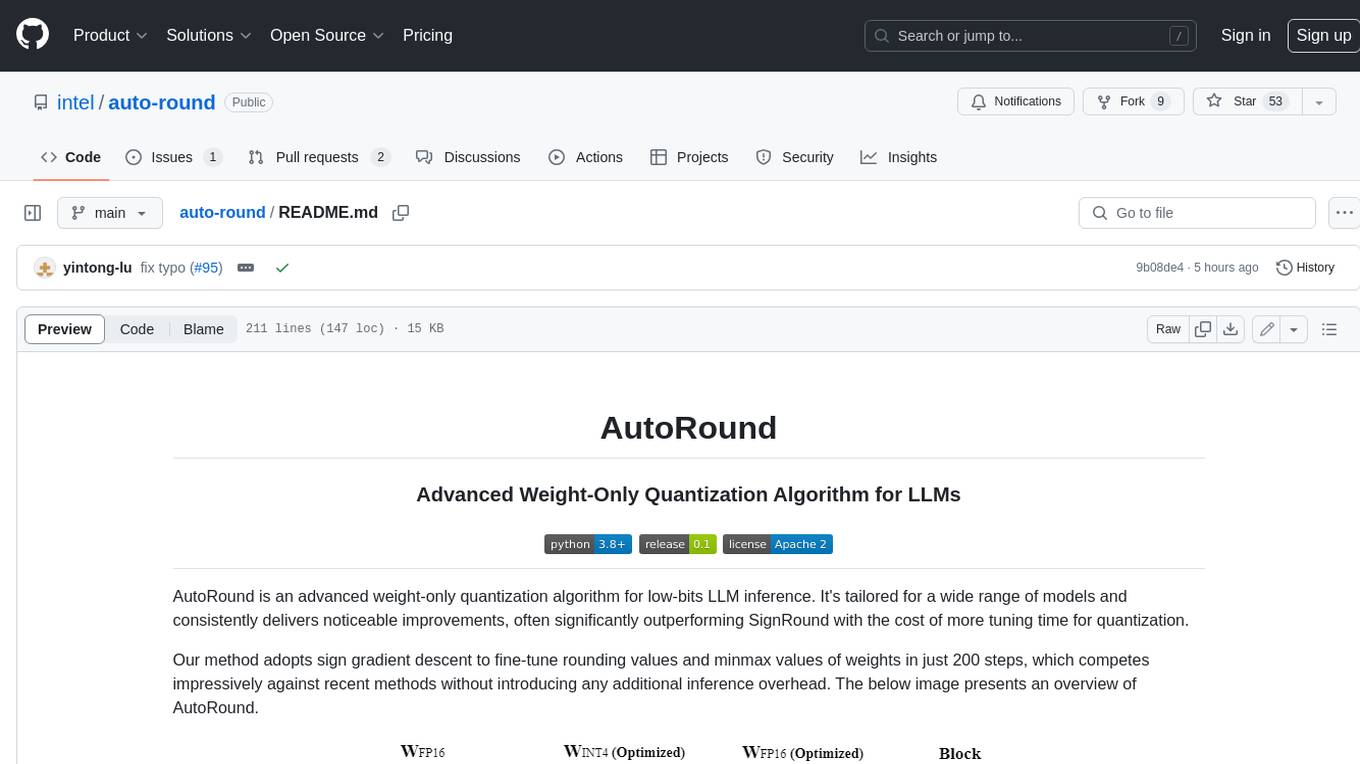
auto-round
AutoRound is an advanced weight-only quantization algorithm for low-bits LLM inference. It competes impressively against recent methods without introducing any additional inference overhead. The method adopts sign gradient descent to fine-tune rounding values and minmax values of weights in just 200 steps, often significantly outperforming SignRound with the cost of more tuning time for quantization. AutoRound is tailored for a wide range of models and consistently delivers noticeable improvements.
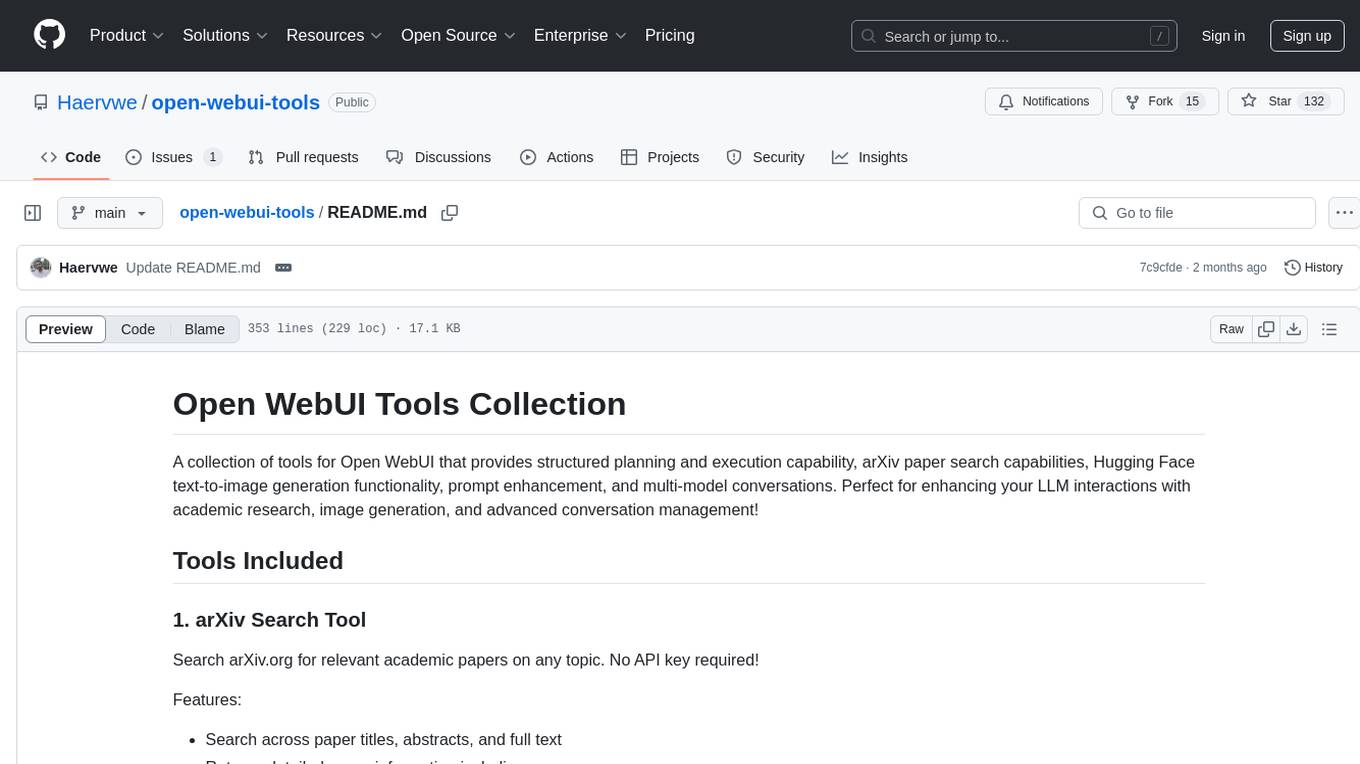
open-webui-tools
Open WebUI Tools Collection is a set of tools for structured planning, arXiv paper search, Hugging Face text-to-image generation, prompt enhancement, and multi-model conversations. It enhances LLM interactions with academic research, image generation, and conversation management. Tools include arXiv Search Tool and Hugging Face Image Generator. Function Pipes like Planner Agent offer autonomous plan generation and execution. Filters like Prompt Enhancer improve prompt quality. Installation and configuration instructions are provided for each tool and pipe.

pdr_ai_v2
pdr_ai_v2 is a Python library for implementing machine learning algorithms and models. It provides a wide range of tools and functionalities for data preprocessing, model training, evaluation, and deployment. The library is designed to be user-friendly and efficient, making it suitable for both beginners and experienced data scientists. With pdr_ai_v2, users can easily build and deploy machine learning models for various applications, such as classification, regression, clustering, and more.
For similar tasks

Azure-Analytics-and-AI-Engagement
The Azure-Analytics-and-AI-Engagement repository provides packaged Industry Scenario DREAM Demos with ARM templates (Containing a demo web application, Power BI reports, Synapse resources, AML Notebooks etc.) that can be deployed in a customer’s subscription using the CAPE tool within a matter of few hours. Partners can also deploy DREAM Demos in their own subscriptions using DPoC.
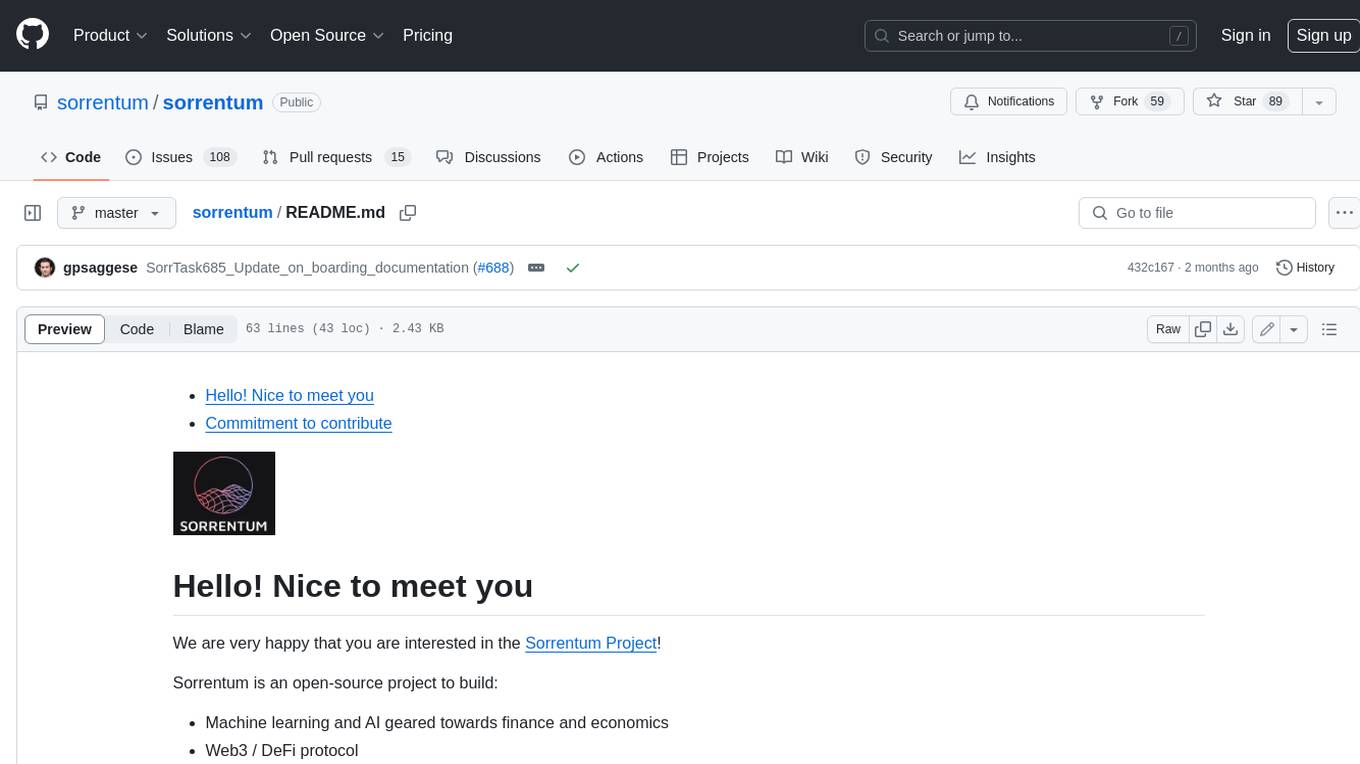
sorrentum
Sorrentum is an open-source project that aims to combine open-source development, startups, and brilliant students to build machine learning, AI, and Web3 / DeFi protocols geared towards finance and economics. The project provides opportunities for internships, research assistantships, and development grants, as well as the chance to work on cutting-edge problems, learn about startups, write academic papers, and get internships and full-time positions at companies working on Sorrentum applications.
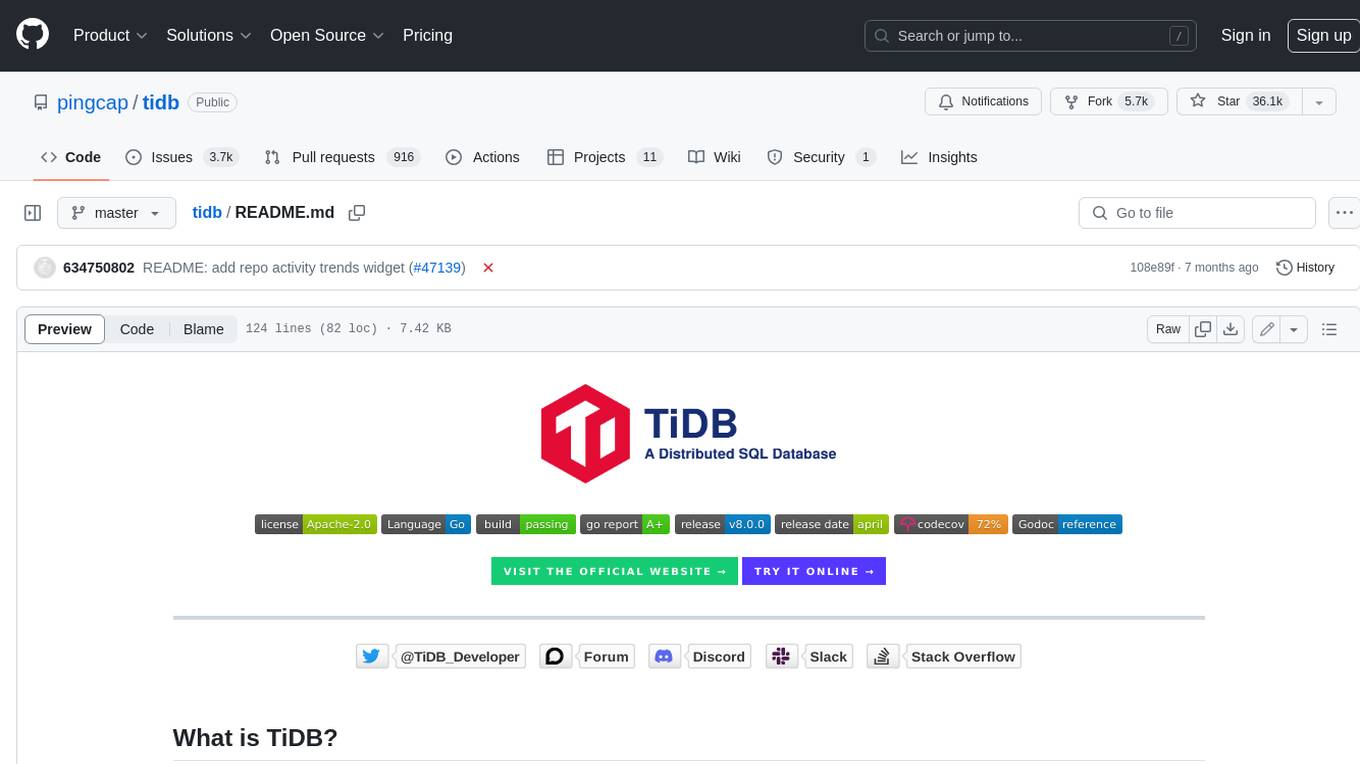
tidb
TiDB is an open-source distributed SQL database that supports Hybrid Transactional and Analytical Processing (HTAP) workloads. It is MySQL compatible and features horizontal scalability, strong consistency, and high availability.

zep-python
Zep is an open-source platform for building and deploying large language model (LLM) applications. It provides a suite of tools and services that make it easy to integrate LLMs into your applications, including chat history memory, embedding, vector search, and data enrichment. Zep is designed to be scalable, reliable, and easy to use, making it a great choice for developers who want to build LLM-powered applications quickly and easily.
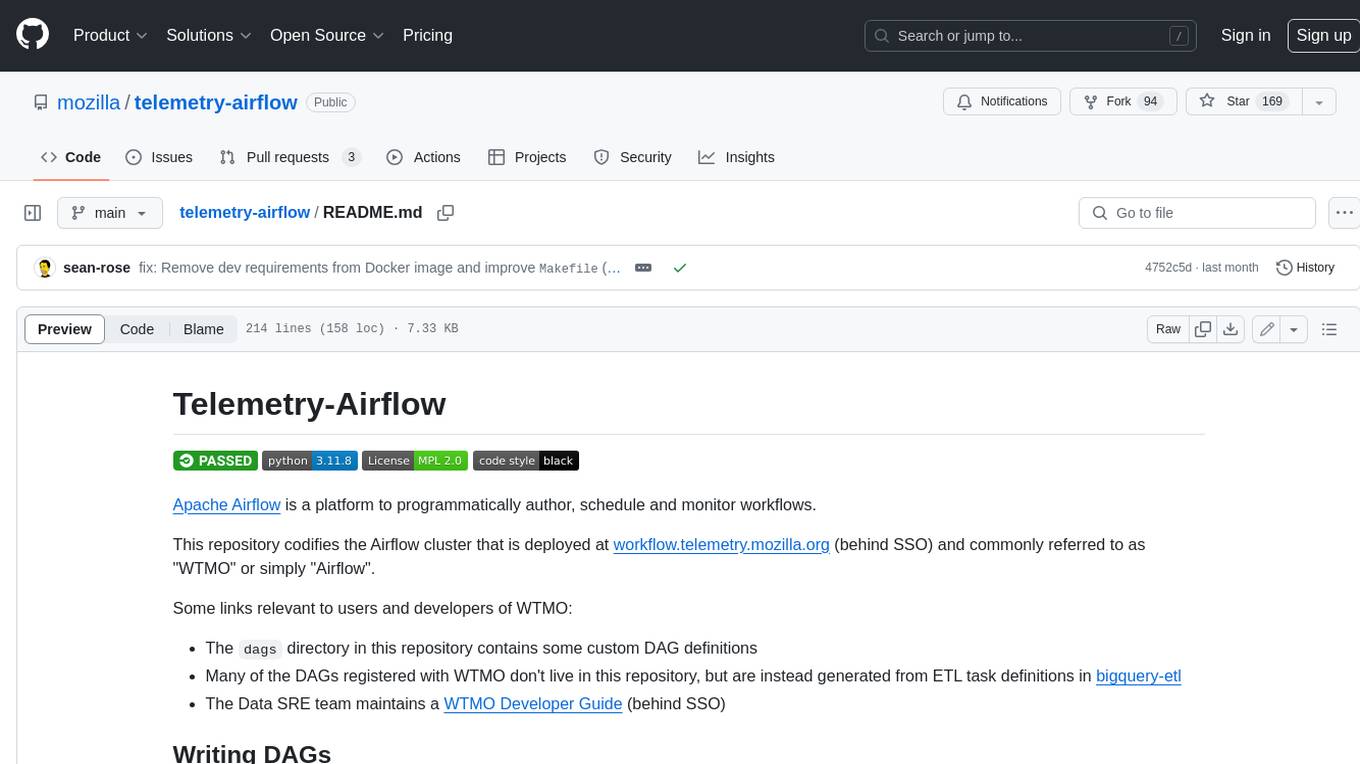
telemetry-airflow
This repository codifies the Airflow cluster that is deployed at workflow.telemetry.mozilla.org (behind SSO) and commonly referred to as "WTMO" or simply "Airflow". Some links relevant to users and developers of WTMO: * The `dags` directory in this repository contains some custom DAG definitions * Many of the DAGs registered with WTMO don't live in this repository, but are instead generated from ETL task definitions in bigquery-etl * The Data SRE team maintains a WTMO Developer Guide (behind SSO)
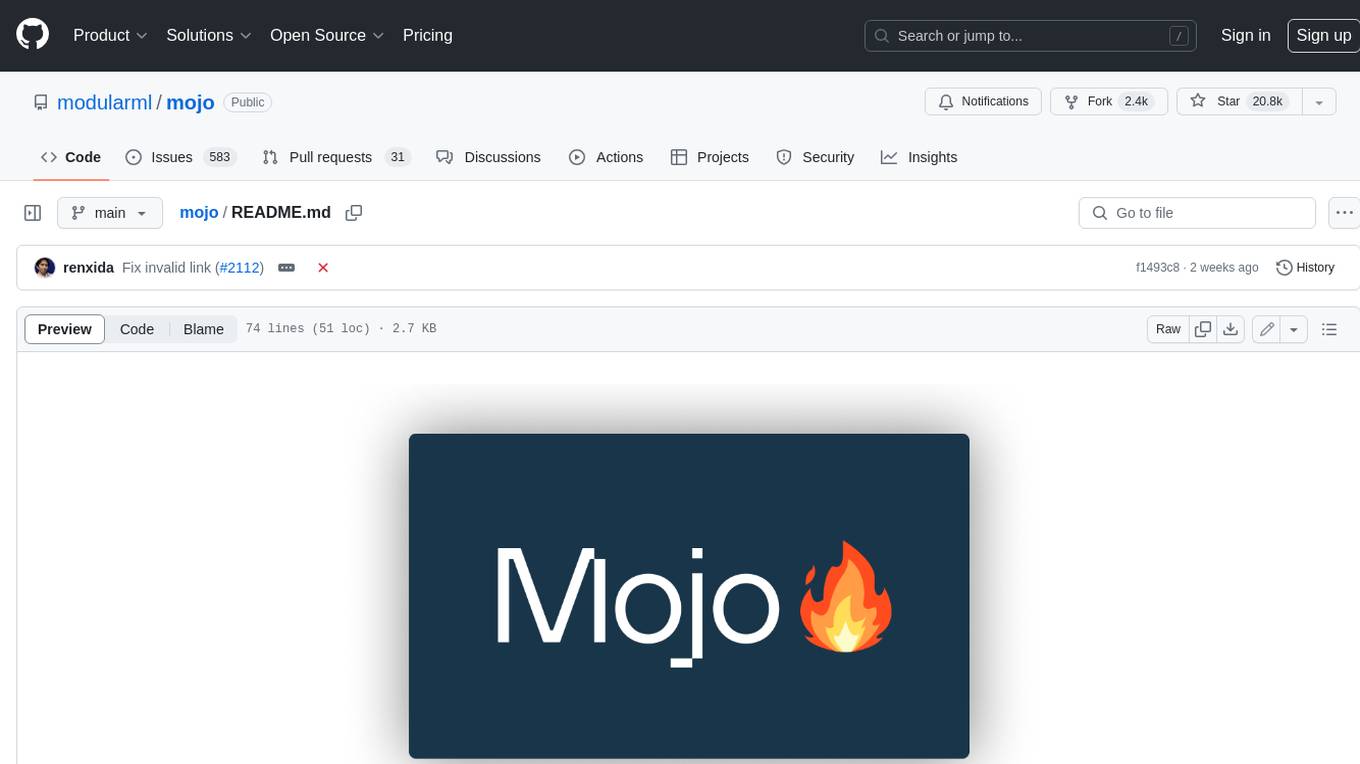
mojo
Mojo is a new programming language that bridges the gap between research and production by combining Python syntax and ecosystem with systems programming and metaprogramming features. Mojo is still young, but it is designed to become a superset of Python over time.
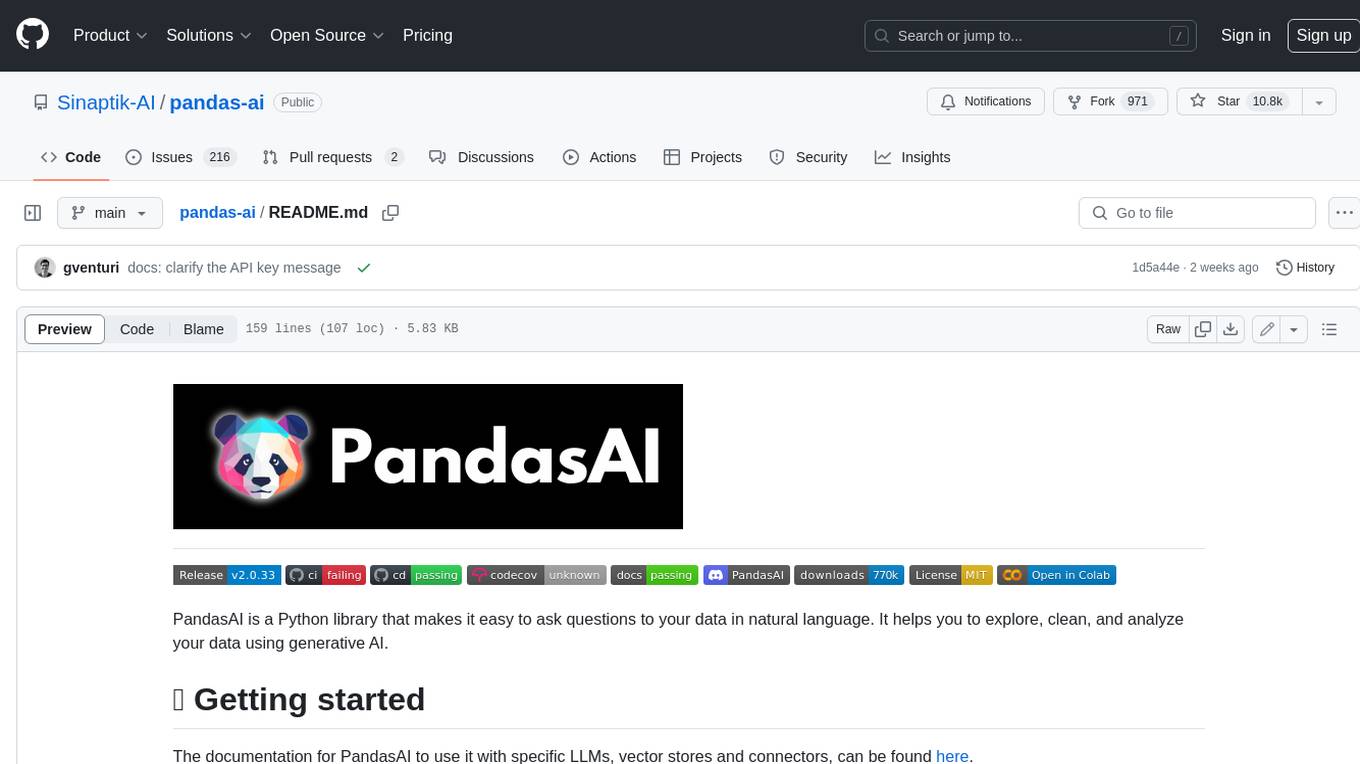
pandas-ai
PandasAI is a Python library that makes it easy to ask questions to your data in natural language. It helps you to explore, clean, and analyze your data using generative AI.
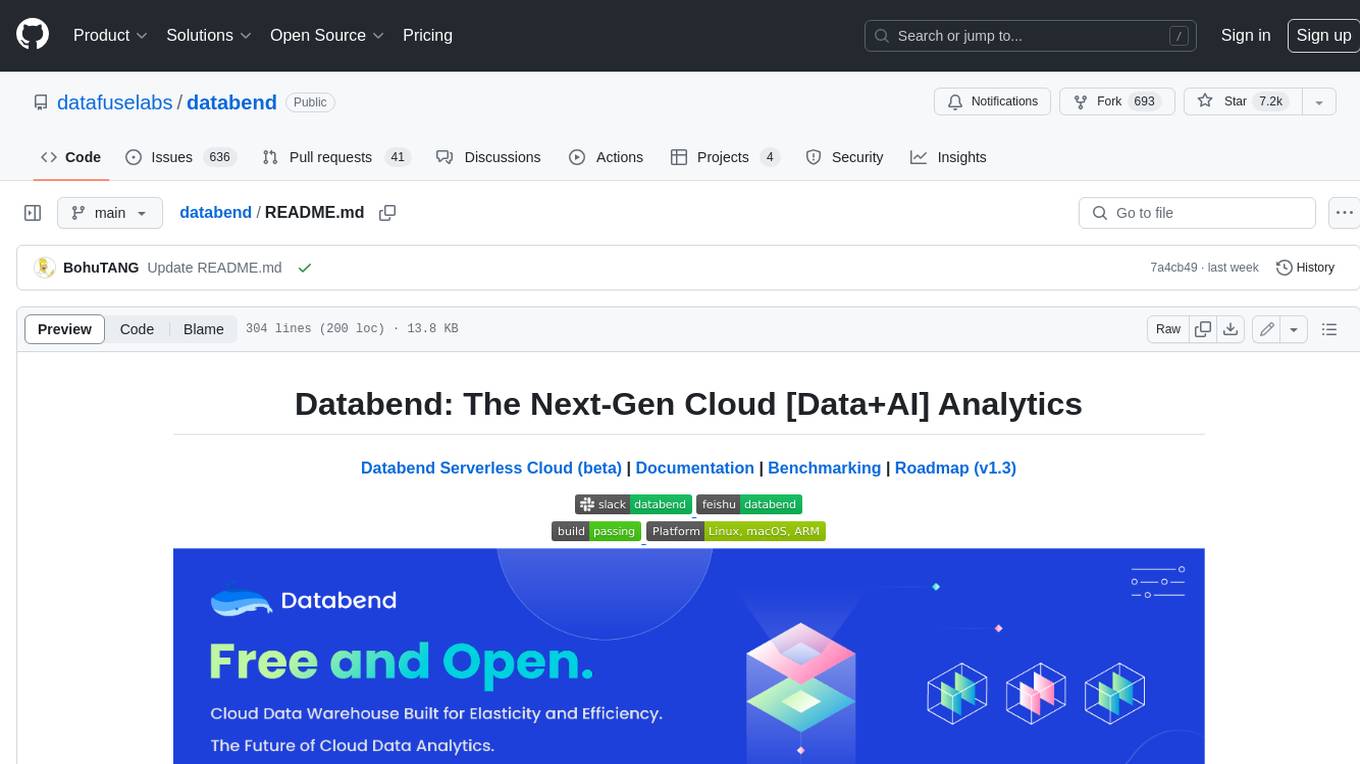
databend
Databend is an open-source cloud data warehouse that serves as a cost-effective alternative to Snowflake. With its focus on fast query execution and data ingestion, it's designed for complex analysis of the world's largest datasets.
For similar jobs
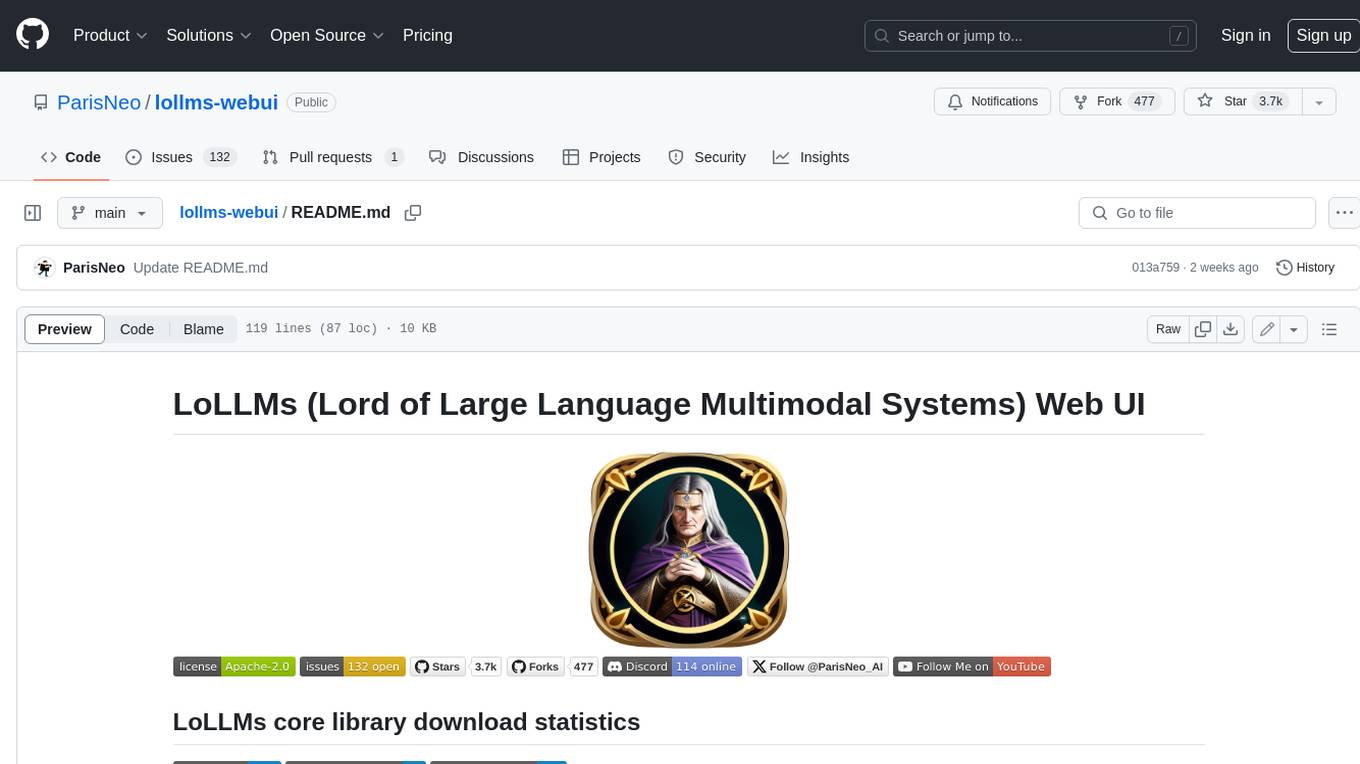
lollms-webui
LoLLMs WebUI (Lord of Large Language Multimodal Systems: One tool to rule them all) is a user-friendly interface to access and utilize various LLM (Large Language Models) and other AI models for a wide range of tasks. With over 500 AI expert conditionings across diverse domains and more than 2500 fine tuned models over multiple domains, LoLLMs WebUI provides an immediate resource for any problem, from car repair to coding assistance, legal matters, medical diagnosis, entertainment, and more. The easy-to-use UI with light and dark mode options, integration with GitHub repository, support for different personalities, and features like thumb up/down rating, copy, edit, and remove messages, local database storage, search, export, and delete multiple discussions, make LoLLMs WebUI a powerful and versatile tool.

Azure-Analytics-and-AI-Engagement
The Azure-Analytics-and-AI-Engagement repository provides packaged Industry Scenario DREAM Demos with ARM templates (Containing a demo web application, Power BI reports, Synapse resources, AML Notebooks etc.) that can be deployed in a customer’s subscription using the CAPE tool within a matter of few hours. Partners can also deploy DREAM Demos in their own subscriptions using DPoC.
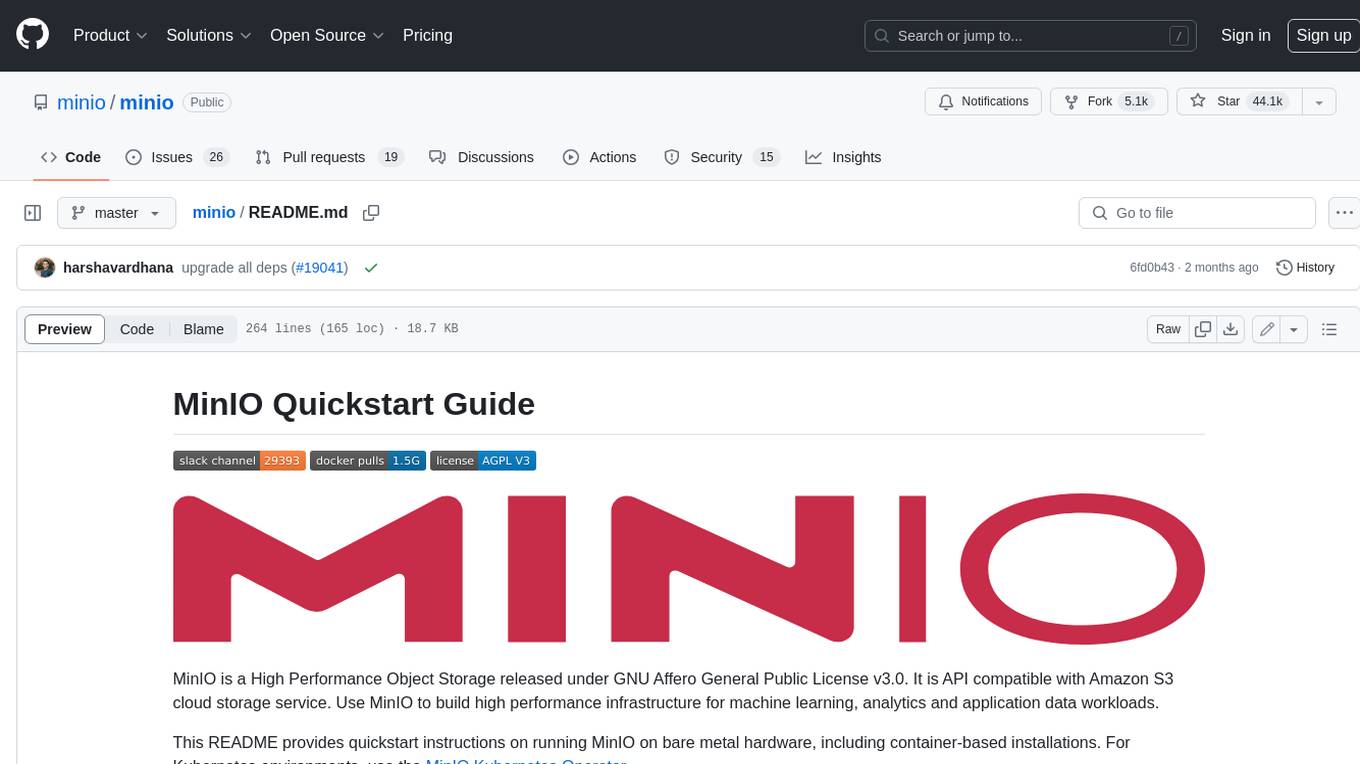
minio
MinIO is a High Performance Object Storage released under GNU Affero General Public License v3.0. It is API compatible with Amazon S3 cloud storage service. Use MinIO to build high performance infrastructure for machine learning, analytics and application data workloads.

mage-ai
Mage is an open-source data pipeline tool for transforming and integrating data. It offers an easy developer experience, engineering best practices built-in, and data as a first-class citizen. Mage makes it easy to build, preview, and launch data pipelines, and provides observability and scaling capabilities. It supports data integrations, streaming pipelines, and dbt integration.
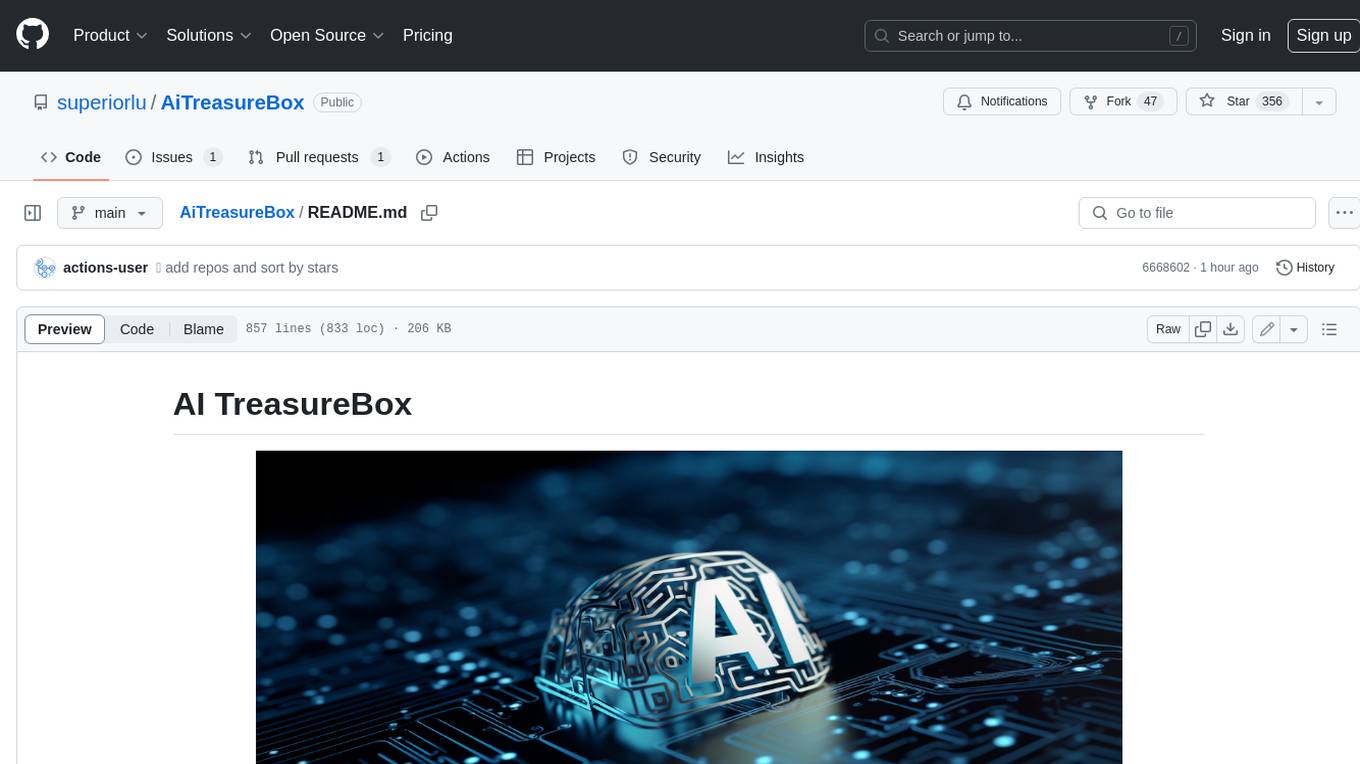
AiTreasureBox
AiTreasureBox is a versatile AI tool that provides a collection of pre-trained models and algorithms for various machine learning tasks. It simplifies the process of implementing AI solutions by offering ready-to-use components that can be easily integrated into projects. With AiTreasureBox, users can quickly prototype and deploy AI applications without the need for extensive knowledge in machine learning or deep learning. The tool covers a wide range of tasks such as image classification, text generation, sentiment analysis, object detection, and more. It is designed to be user-friendly and accessible to both beginners and experienced developers, making AI development more efficient and accessible to a wider audience.

tidb
TiDB is an open-source distributed SQL database that supports Hybrid Transactional and Analytical Processing (HTAP) workloads. It is MySQL compatible and features horizontal scalability, strong consistency, and high availability.
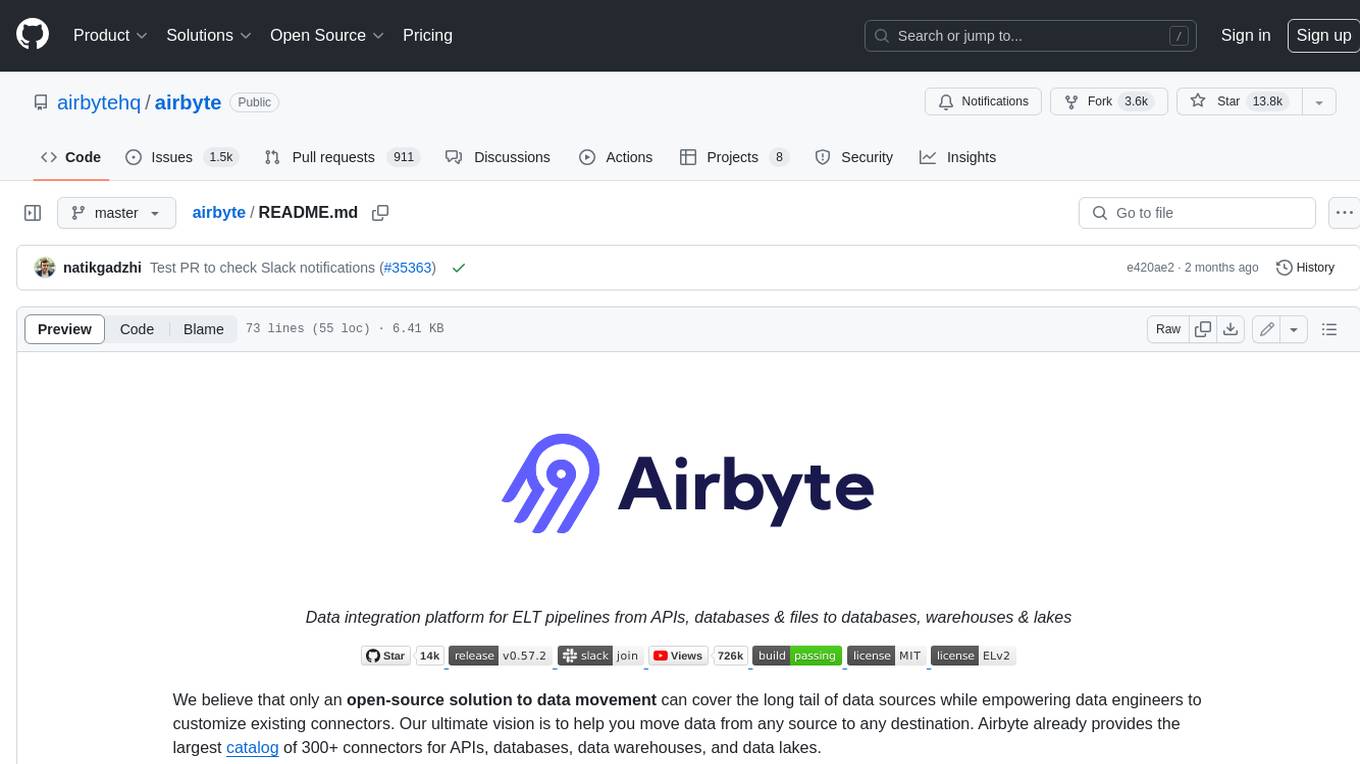
airbyte
Airbyte is an open-source data integration platform that makes it easy to move data from any source to any destination. With Airbyte, you can build and manage data pipelines without writing any code. Airbyte provides a library of pre-built connectors that make it easy to connect to popular data sources and destinations. You can also create your own connectors using Airbyte's no-code Connector Builder or low-code CDK. Airbyte is used by data engineers and analysts at companies of all sizes to build and manage their data pipelines.
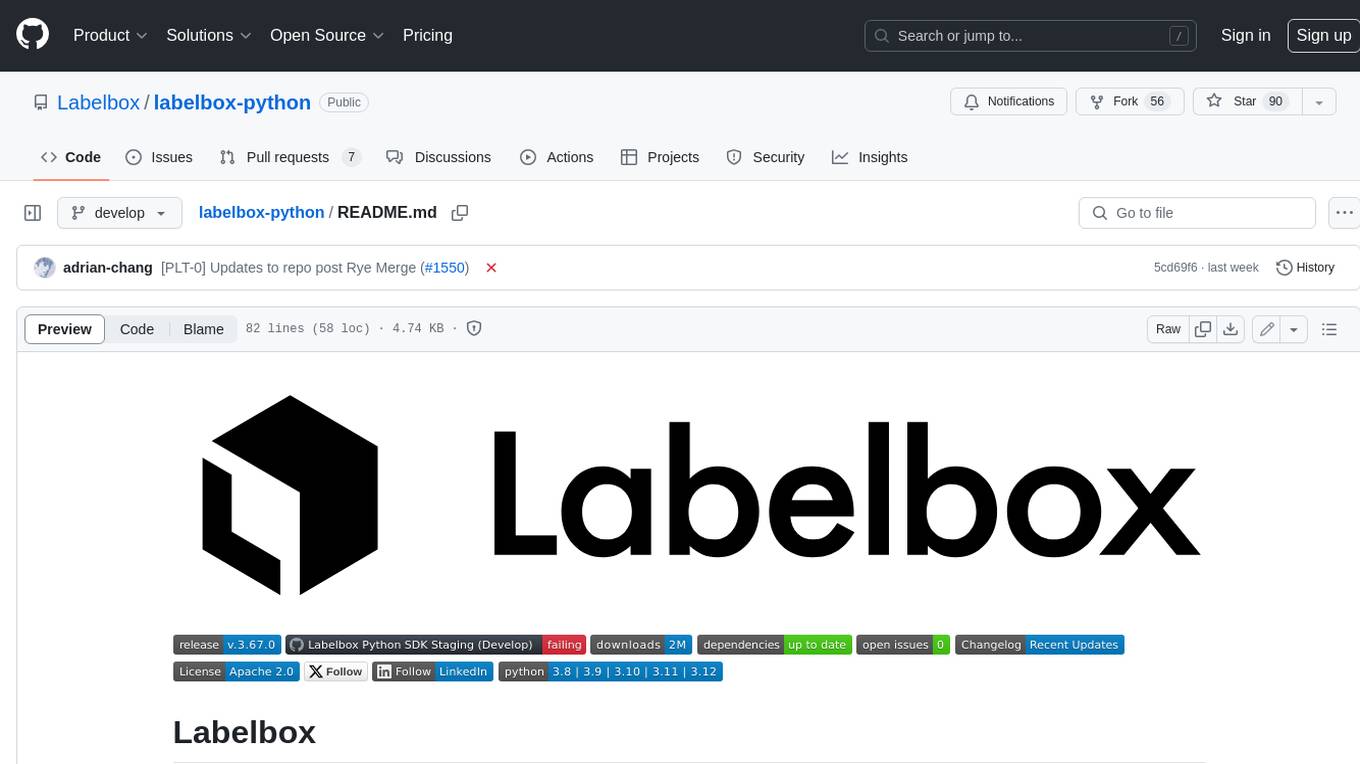
labelbox-python
Labelbox is a data-centric AI platform for enterprises to develop, optimize, and use AI to solve problems and power new products and services. Enterprises use Labelbox to curate data, generate high-quality human feedback data for computer vision and LLMs, evaluate model performance, and automate tasks by combining AI and human-centric workflows. The academic & research community uses Labelbox for cutting-edge AI research.














-B31B1B?logo=arxiv&logoColor=red)

